Sofia Aldinio
Visual Journalist + Storyteller
Until We Are Gone
Across the Northern Baja Sur Region of Mexico, the traditional culture shaped by living directly off the land for hundreds of years is at risk of disappearing within our lifetime, and with it, their stories and ancestral knowledge.
Since 2020, Until We Are Gone has documented the journey of the people and the communities who have lived in these desert regions for hundreds of years with an intimate photo-reportage of their fears and hopes as they witness their traditions and memories fade away. The work reveals past and present stories of colonization, culture, and history and explores the current causes contributing to the rapidly shifting culture.
Across the Northern Baja Sur Region of Mexico, the traditional culture shaped by living directly off the land for hundreds of years is at risk of disappearing within our lifetime, and with it, their stories and ancestral knowledge.
Since 2020, Until We Are Gone has documented the journey of the people and the communities who have lived in these desert regions for hundreds of years with an intimate photo-reportage of their fears and hopes as they witness their traditions and memories fade away. The work reveals past and present stories of colonization, culture, and history and explores the current causes contributing to the rapidly shifting culture.
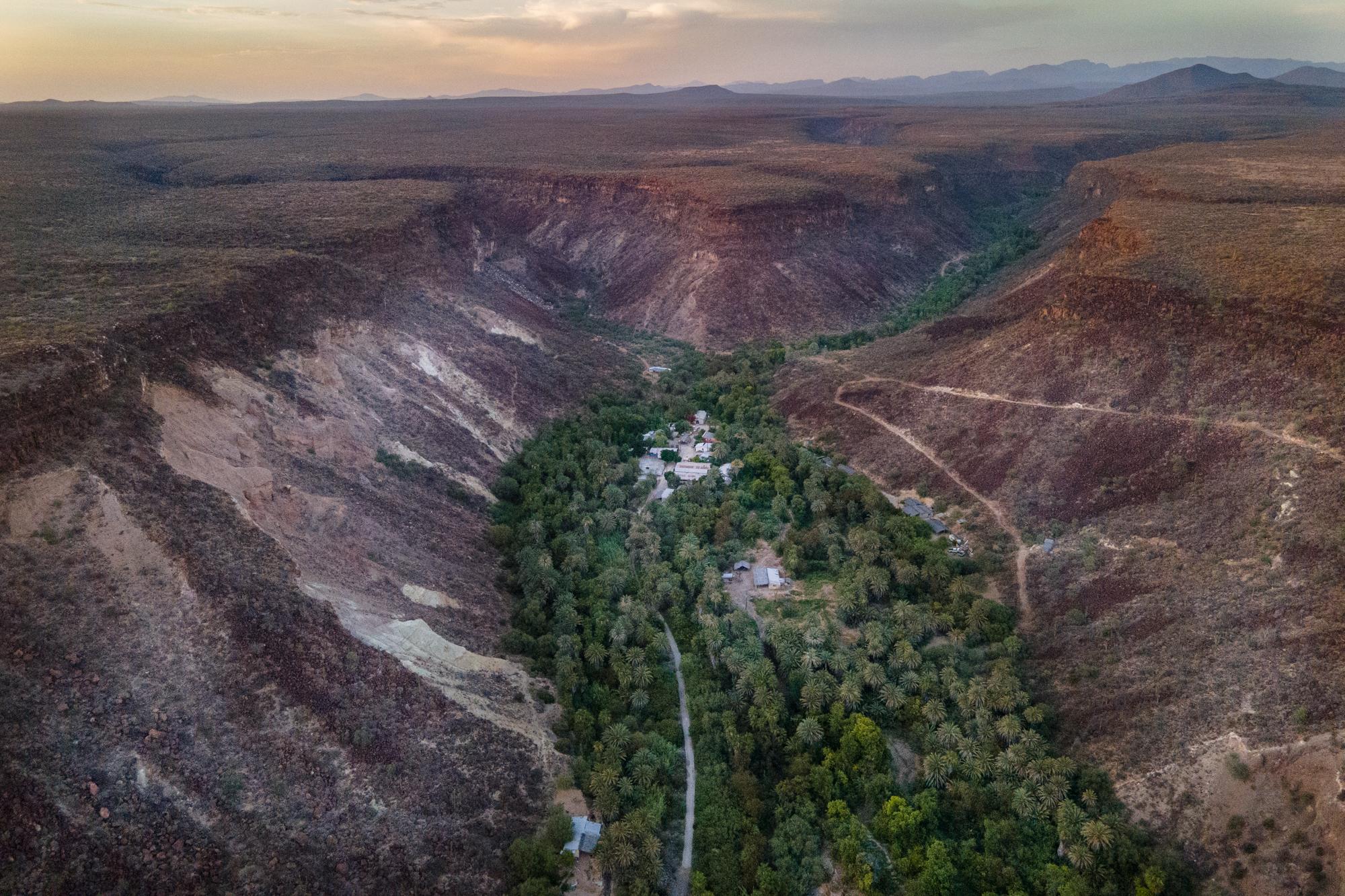
An aerial view of San Jose de Gracia - a community nestled in the middle of the Pacific coast of Baja California, Mexico, July, 2021. The community claims that it was founded 200 years ago, but today, there are only 21 members left living in the community. As with many other small communities, water is why they could settle and live in their surroundings. However, the rainy season has shifted, leaving their community without a waterfall flowing off the canyon as one used to. Mulegé Mexico
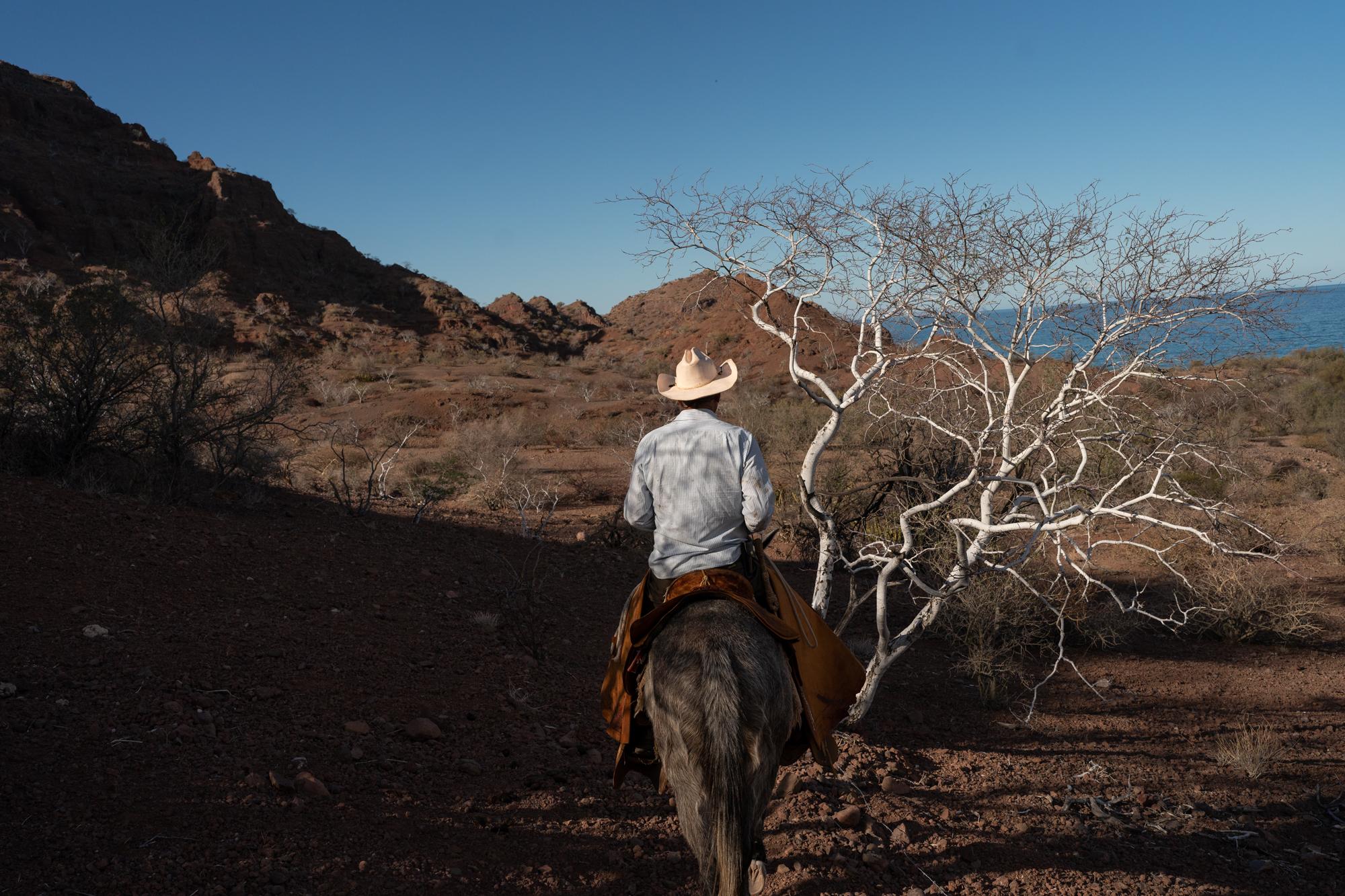
Alejo Romero rides a horse through his ranch, San Cosme, Baja California, Mexico, February 2022. At the age of eight Alejo used to ride a horse by himself to collect water with a bucket for his family. The water used to be more abundant. Today the water gets trucked from the closest city.

A reflection of Enrique's hand, San Jose de Gracia, Baja California, Mexico, February 2022. Enrique, 38, moved to the community two years ago with the hope to start a small clinic. His dad was born and raised in the community and is now teaching him about all the medicinal plants in the area. Mexico
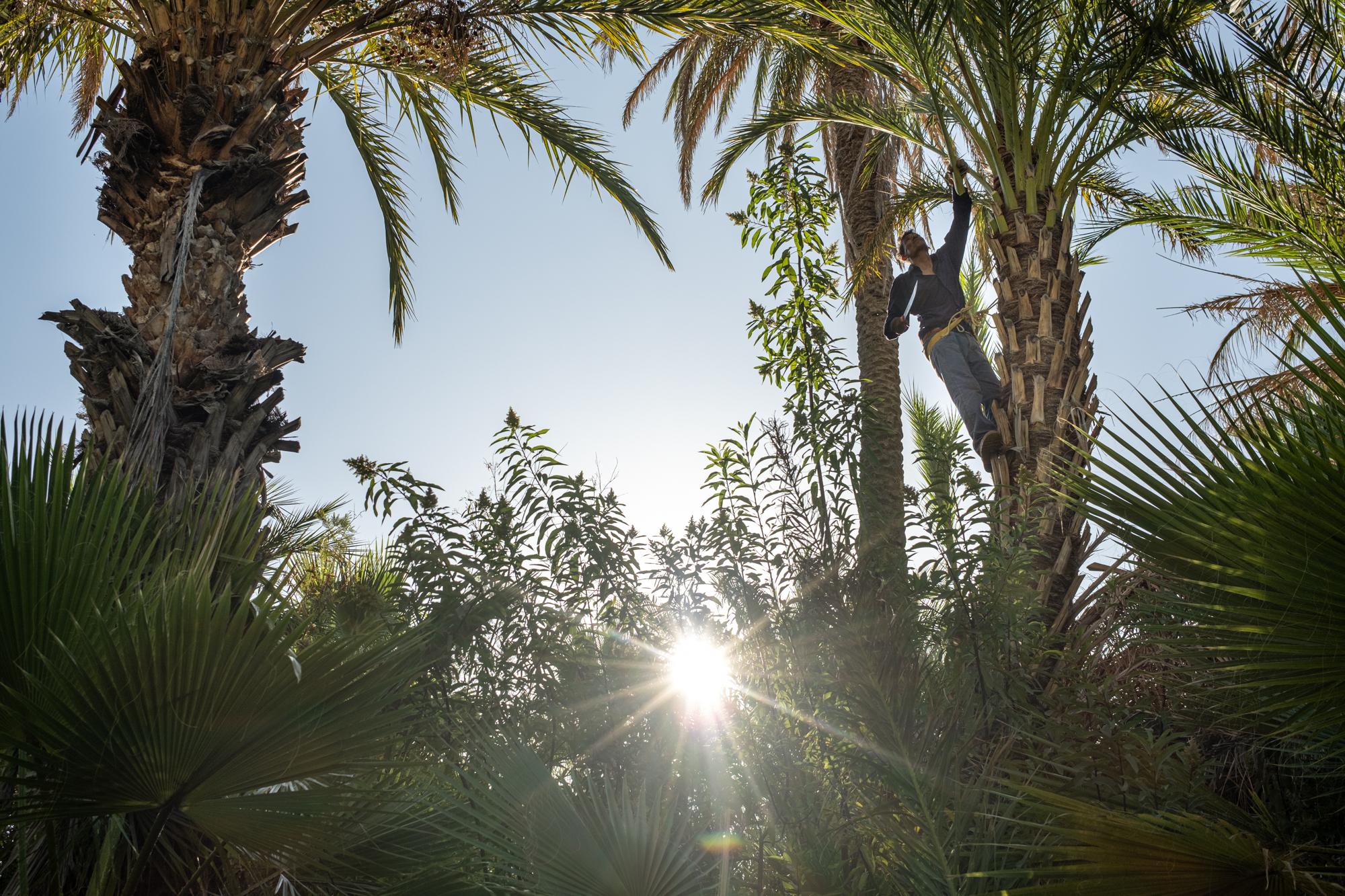
Miguel Murillo cuts palms in San Jose de Gracia, Baja California, Mexico, to build houses outside the community, July 2021. A handful of homes in the community are still built 100% of palms. Concrete has been used in newer construction to replace this natural element. Only a couple of people left in the community are still cutting palms.
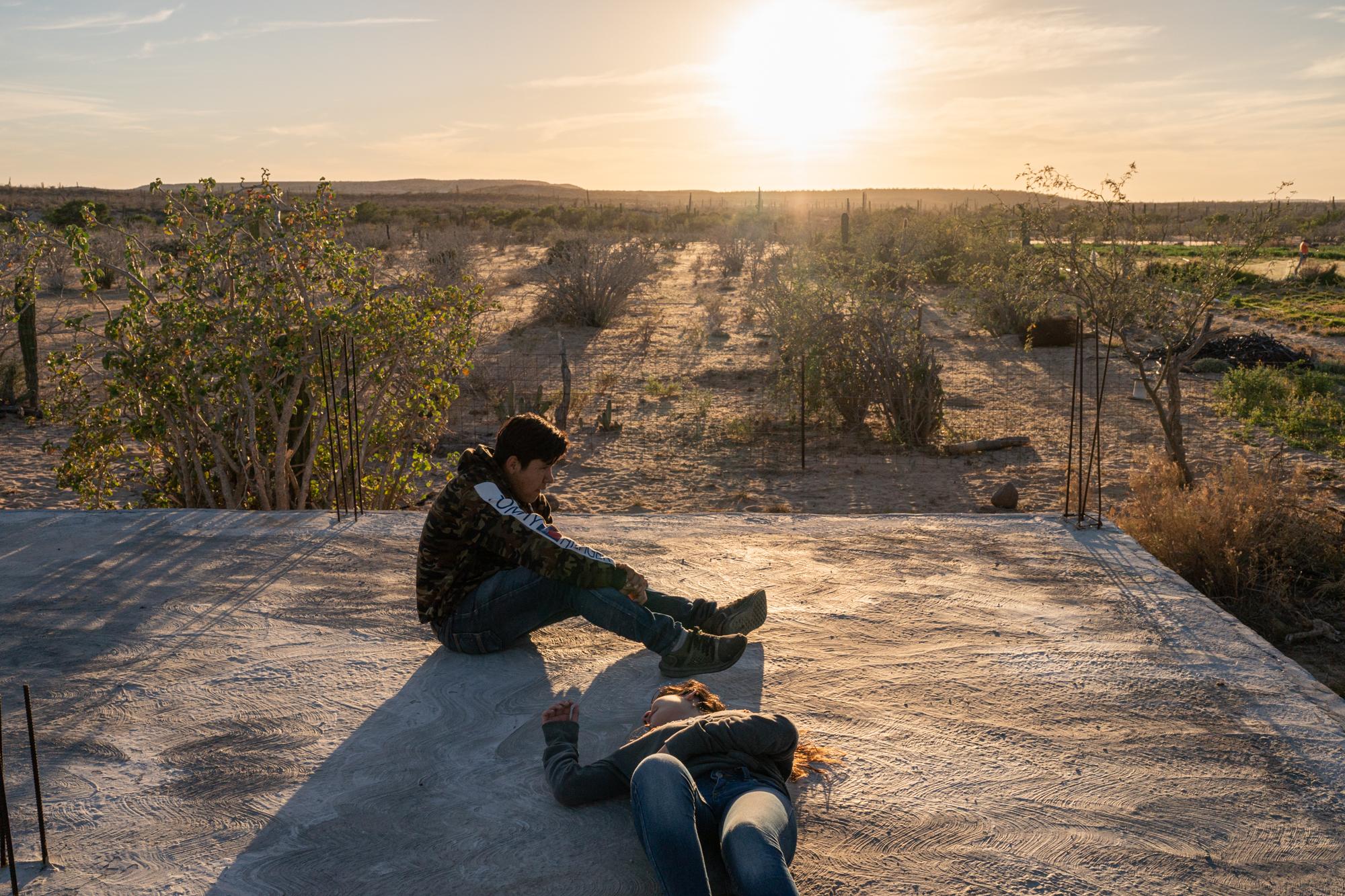
Dalma and Gerardo lay over the water tank, San Juanico, Baja California, Mexico, February 2022. The water is used to feed the plants and the animals. The ranch has a well of 60 meters that feeds the closest town approximately eight kilometers away. Because of the lack of water, all new water contracts are on pause in the town until a new well is dug. Mexico
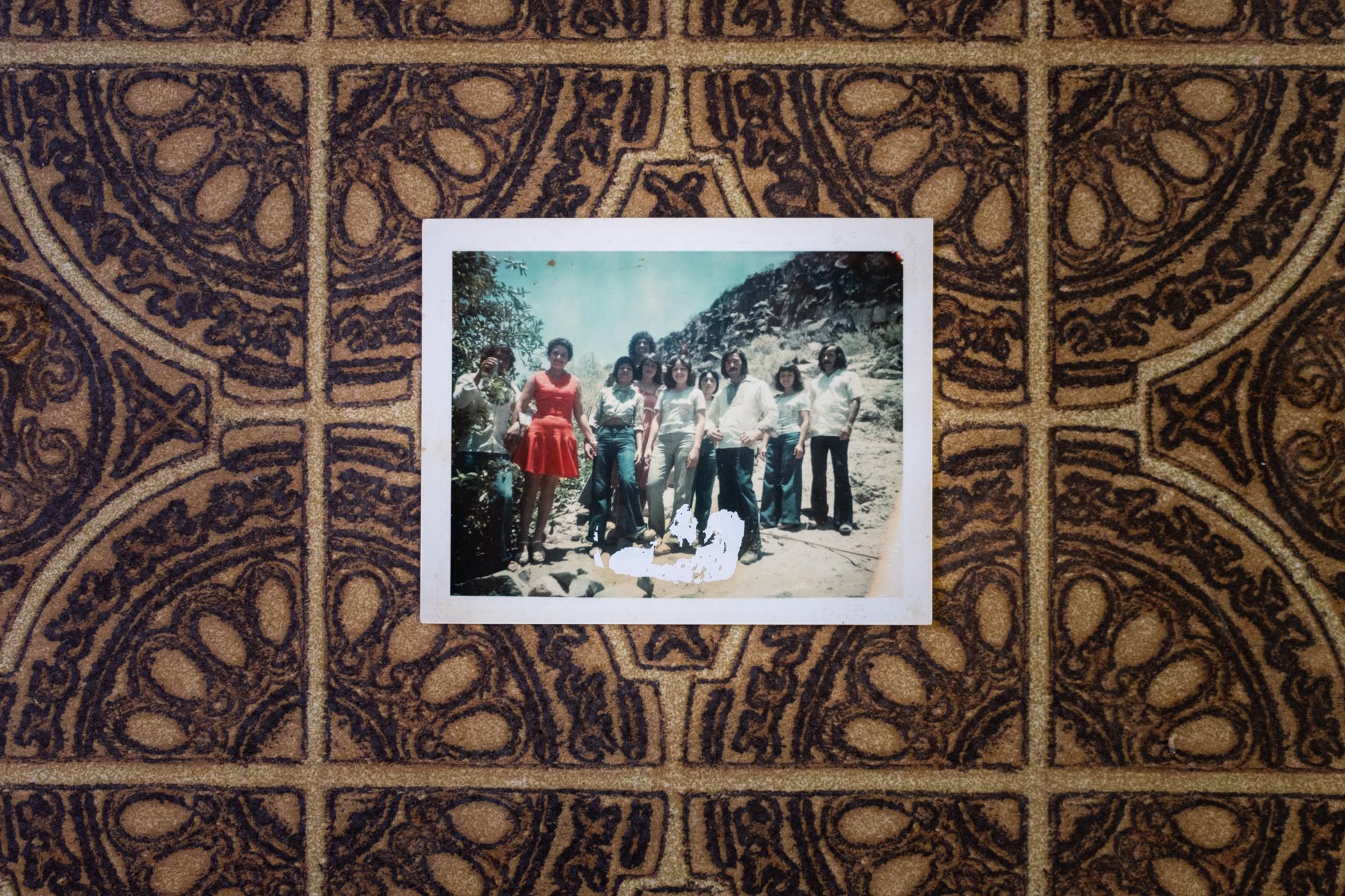
An archival photo lies on a 100-year-old table from Chancha's grandmothers at her house in San Jose de Gracia, Baja California, Mexico, January 17th, 2021. The town was founded almost 200 years ago. With only 12 people living in the community and no younger up-and-coming generation, the community is at risk of disappearing, along with their collective memory and tradition. Mexico
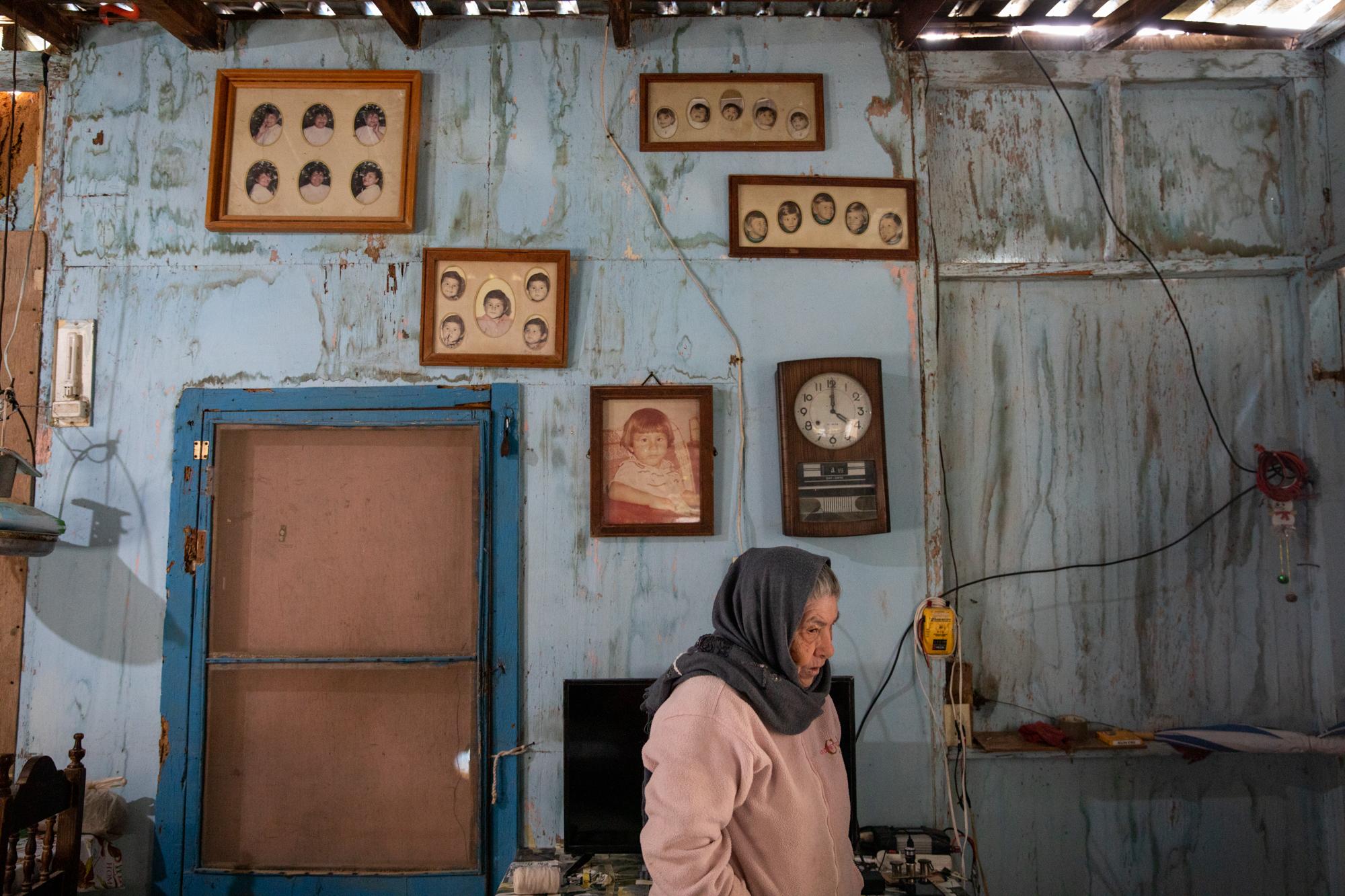
Juana keeps warm in her house in San Jose de Gracia, Baja California, Mexico, February 2022. Juana is the oldest of 11 brothers and sisters. She was born and raised in the community. “It was never this cold in the winter,” she said. The community has all been claiming the unusual temperatures that they have had. Mexico
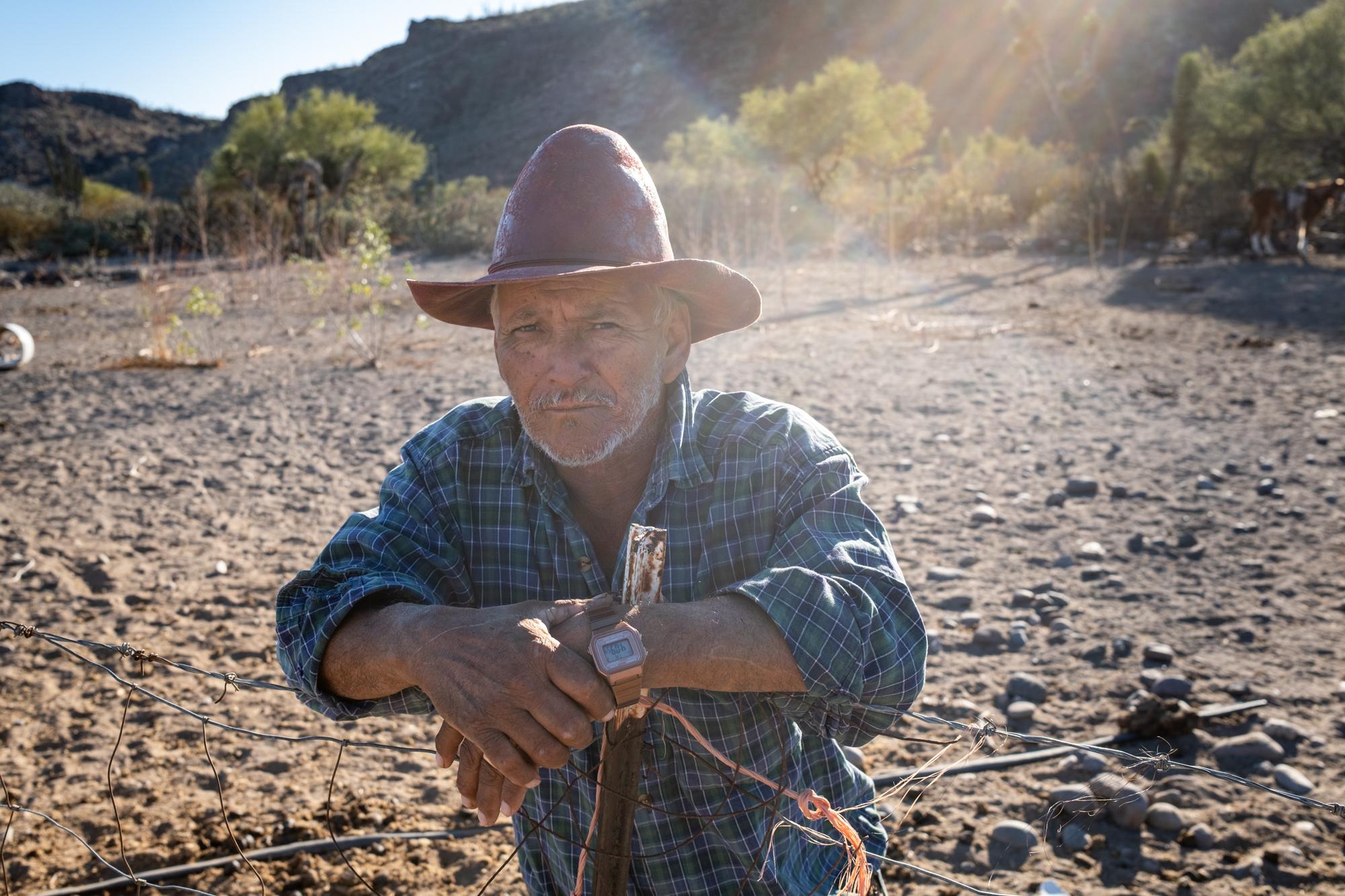
Portrait of Chuy Rojas in his ranch El Paraje, San ignacio, Mexico December 2020. Chuy holds immense knowledge of the area, but this one risks disappearing with no one to pass it on to.
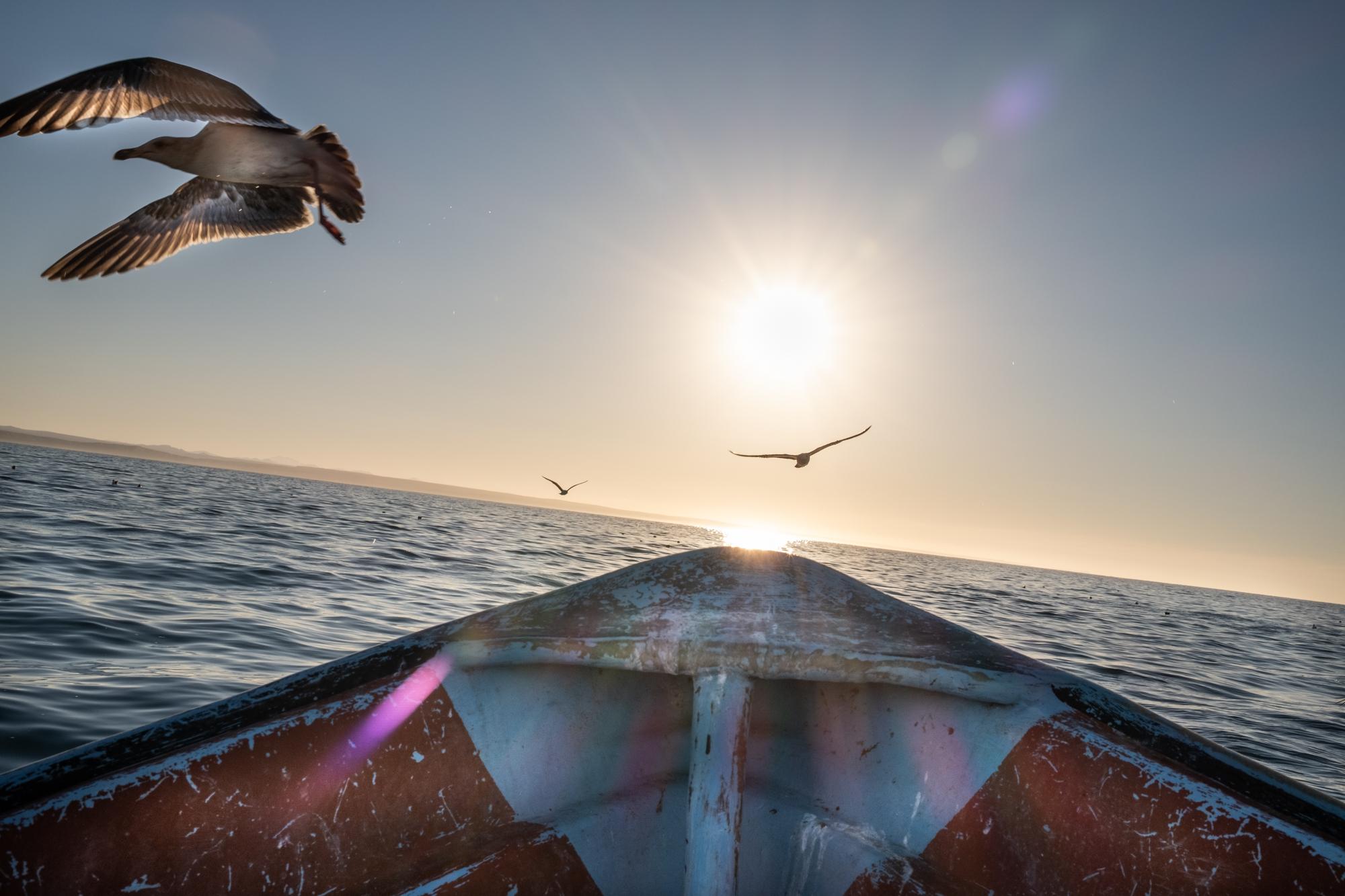
On a calm sea in the early morning, Felipe and Arturo collect lobster and octopus in San Juanico, Baja California, Mexico, January 13th, 2021. The season used to last for two or three months, this season it only lasted for a week. This particular day they pulled only one octopus that weighed 500gr, which equals $2 USD. The local fishing community is stressing about what the future will bring them - to put food on their table and enough money to keep going. The elders are pushing the younger generation to stay clear of the industry, pushing them to move to the cities for greater opportunities. Baja California` Mexico`
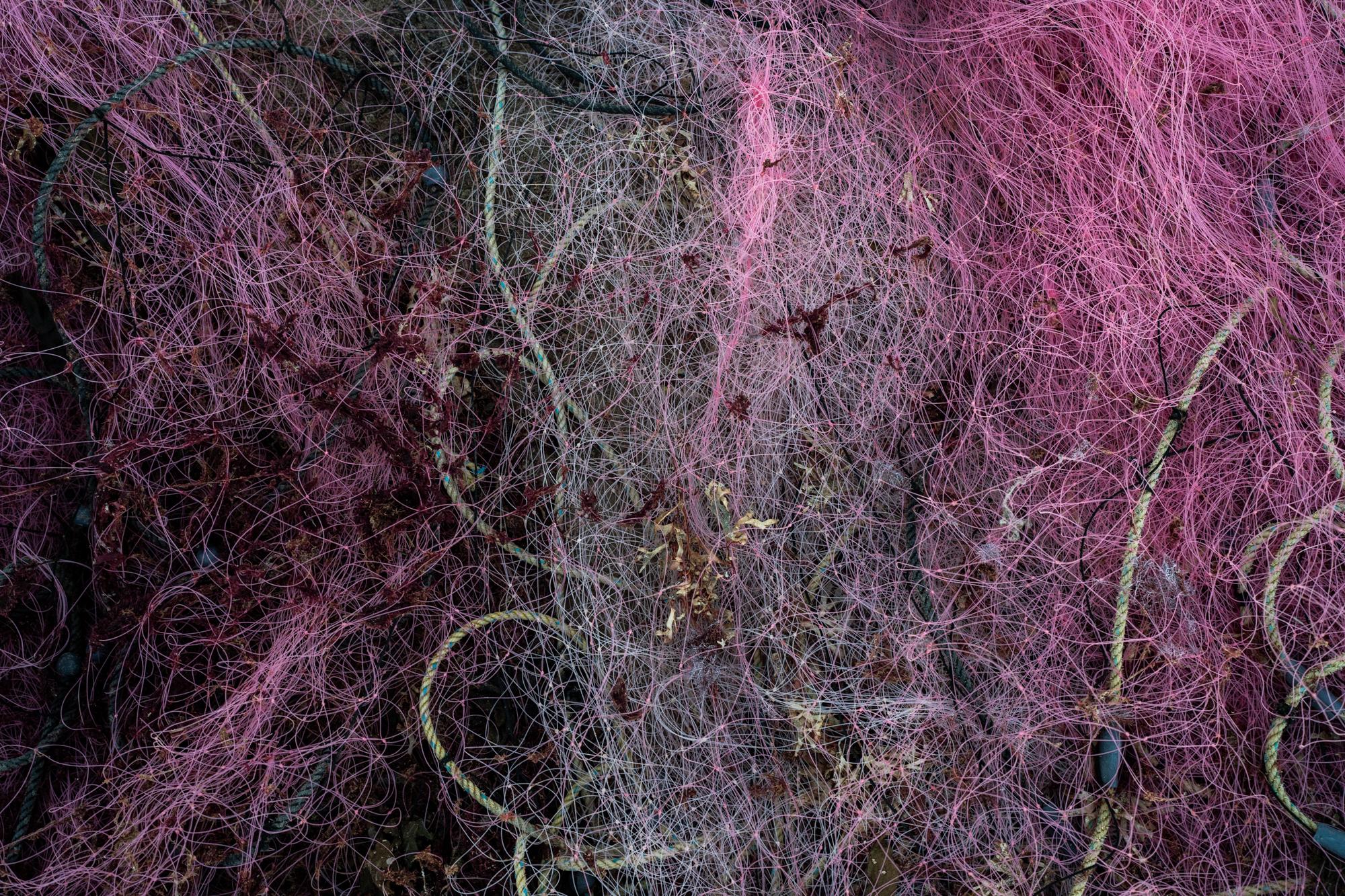
An empty net lays on the beach, San Juanico, Baja California, Mexico, February 2022. Mexico
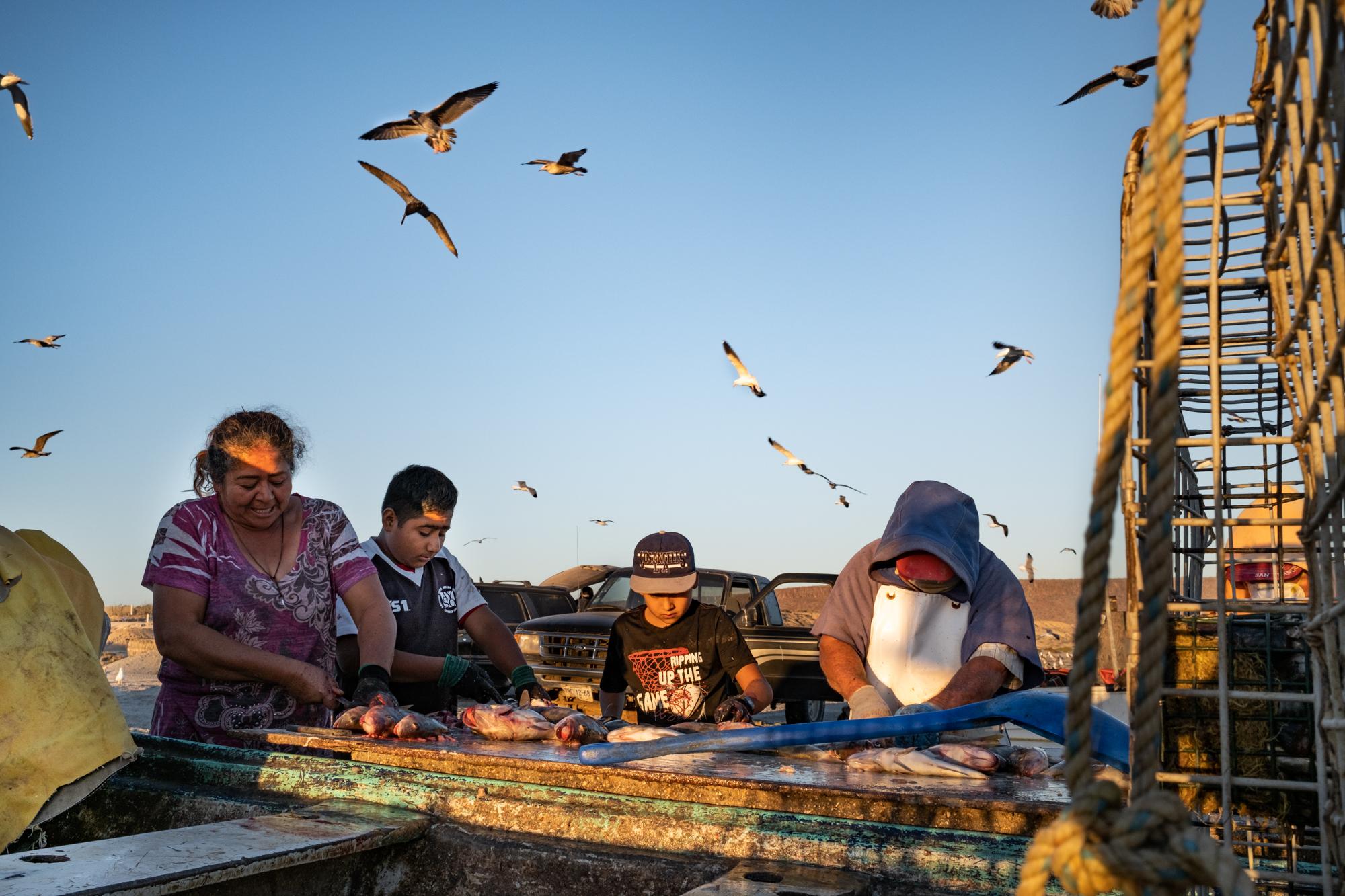
Emilda and her family clean the fish prior to transport to La Paz, Baja California, Mexico, January 2021. Emilda comes from a long fishing line, but she hopes differently for her kids. “It’s not like it used to be, there are no more fish.” She said.
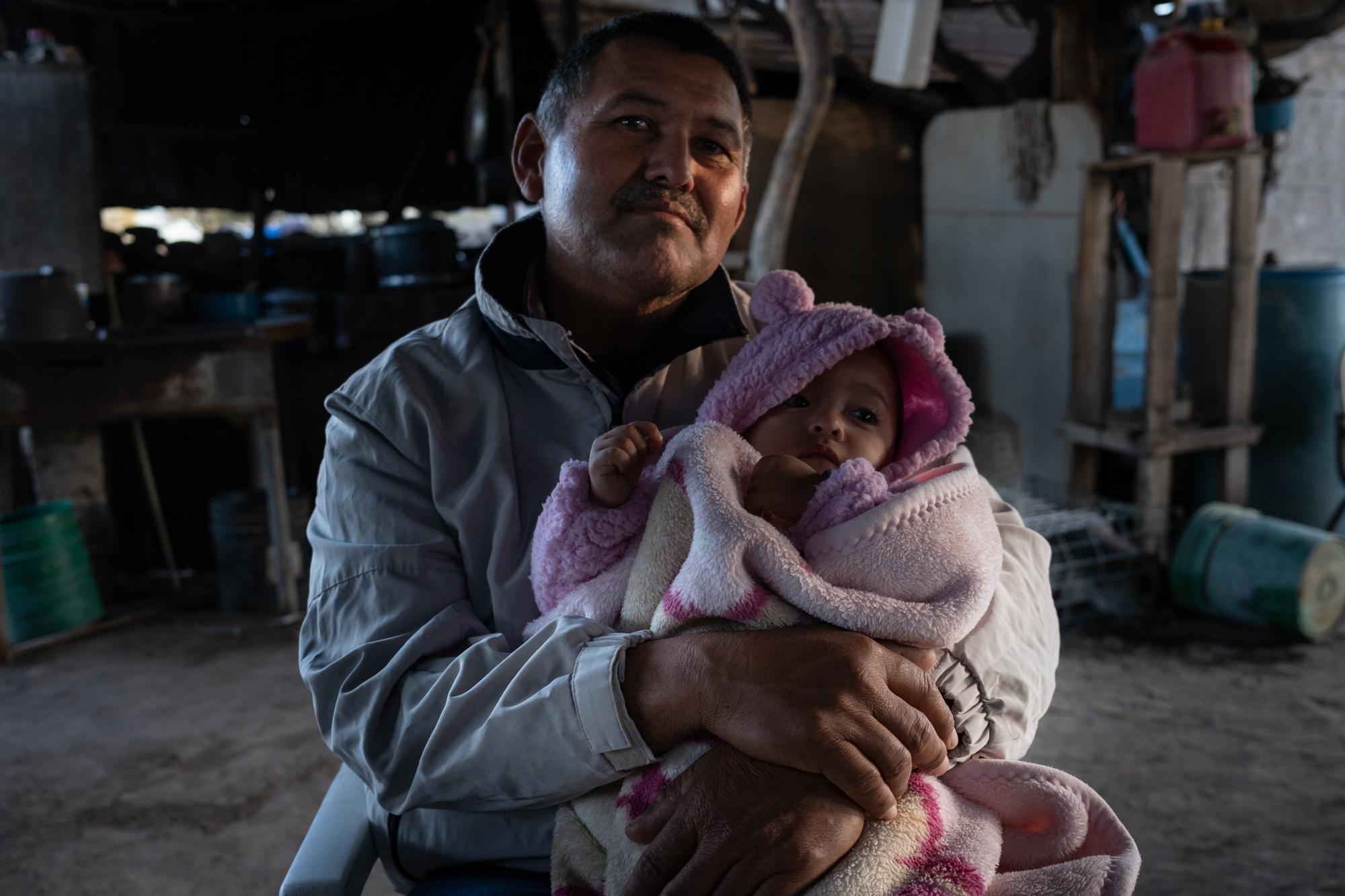
On New Year’s Eve, Ramon Alvarez sits with his one year old daughter at his father in law’s ranch, Rancho El Paraje, Baja California, Mexico, December 2020. He also lives on a ranch, at his father’s place where he sells and buys animals for a living.
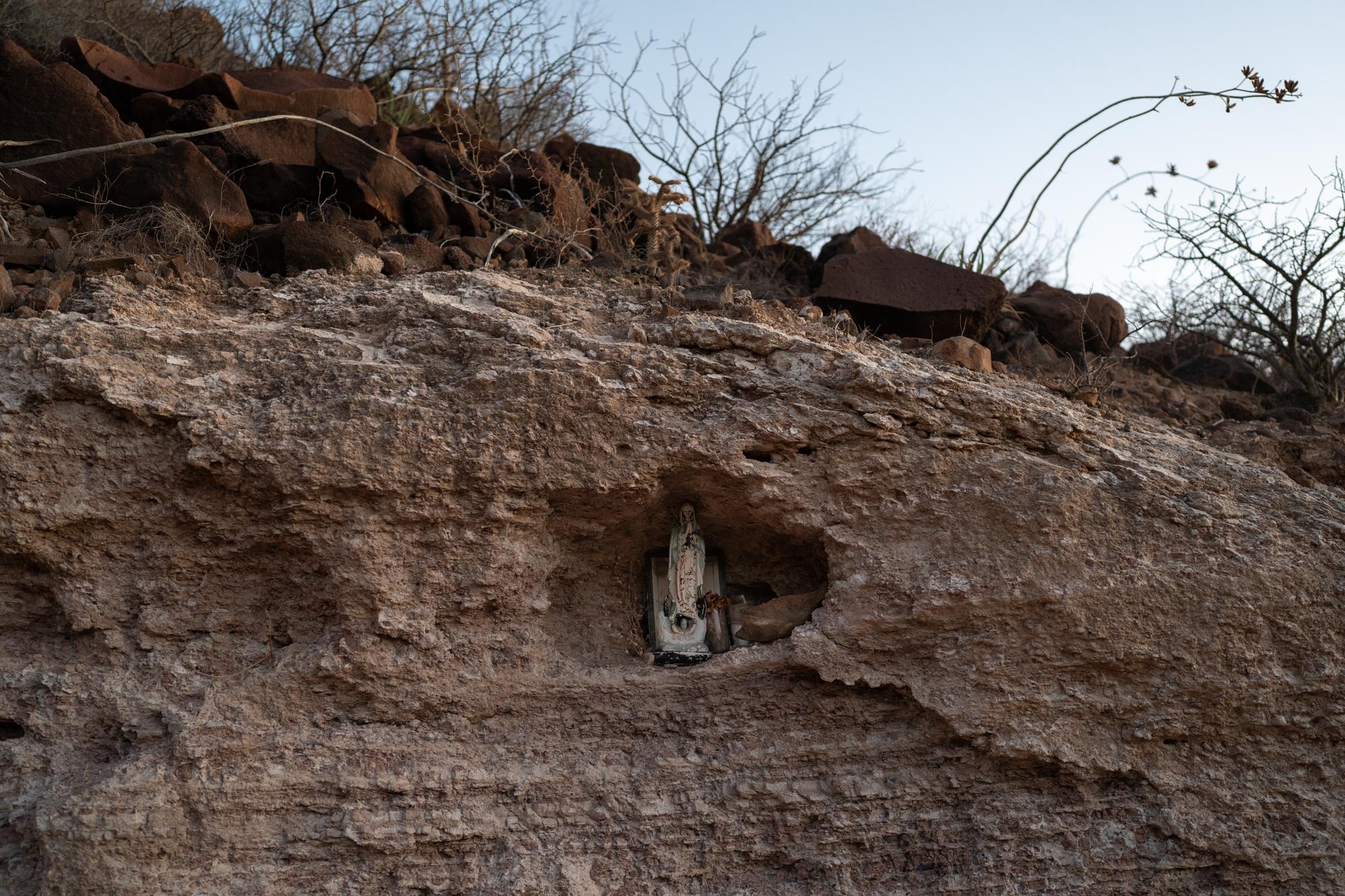
The San Jose de Gracia community placed ornaments in a rock crack in San Jose de Gracia, Baja California, Mexico, in November 2024. The town was founded almost 200 years ago. With less than 20 people living in the community and no younger up-and-coming generation, the community is at risk of disappearing, along with their collective memory and tradition. This photo is part of a larger project about the loss of cultural heritage in Baja California, Mexico.
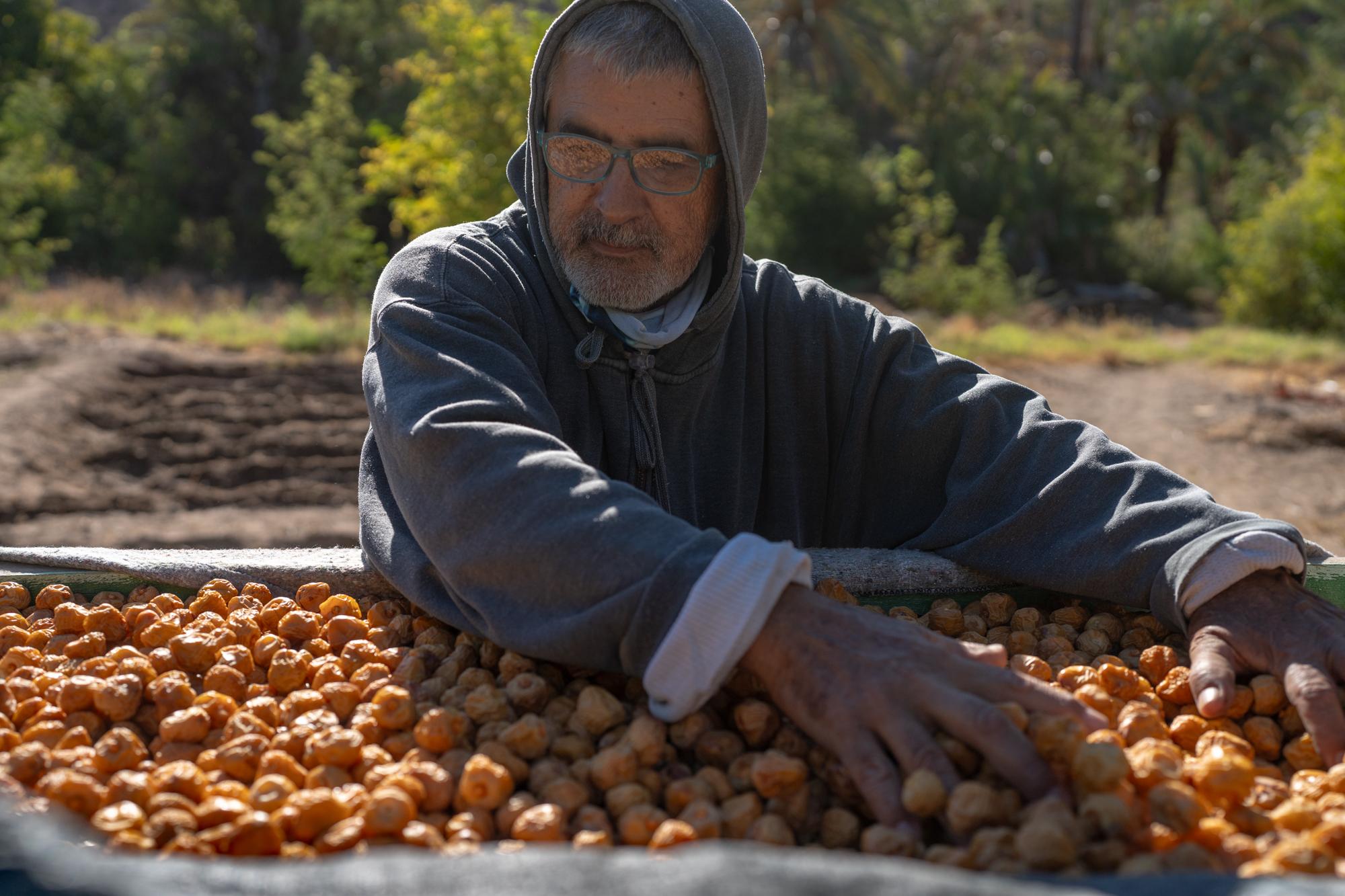
Mario classifies dates in San Jose de Gracia, Baja California, Mexico, in November 2024. He is one of 20 who still live in the community. He still relies on small incomes like this to make money for a living.
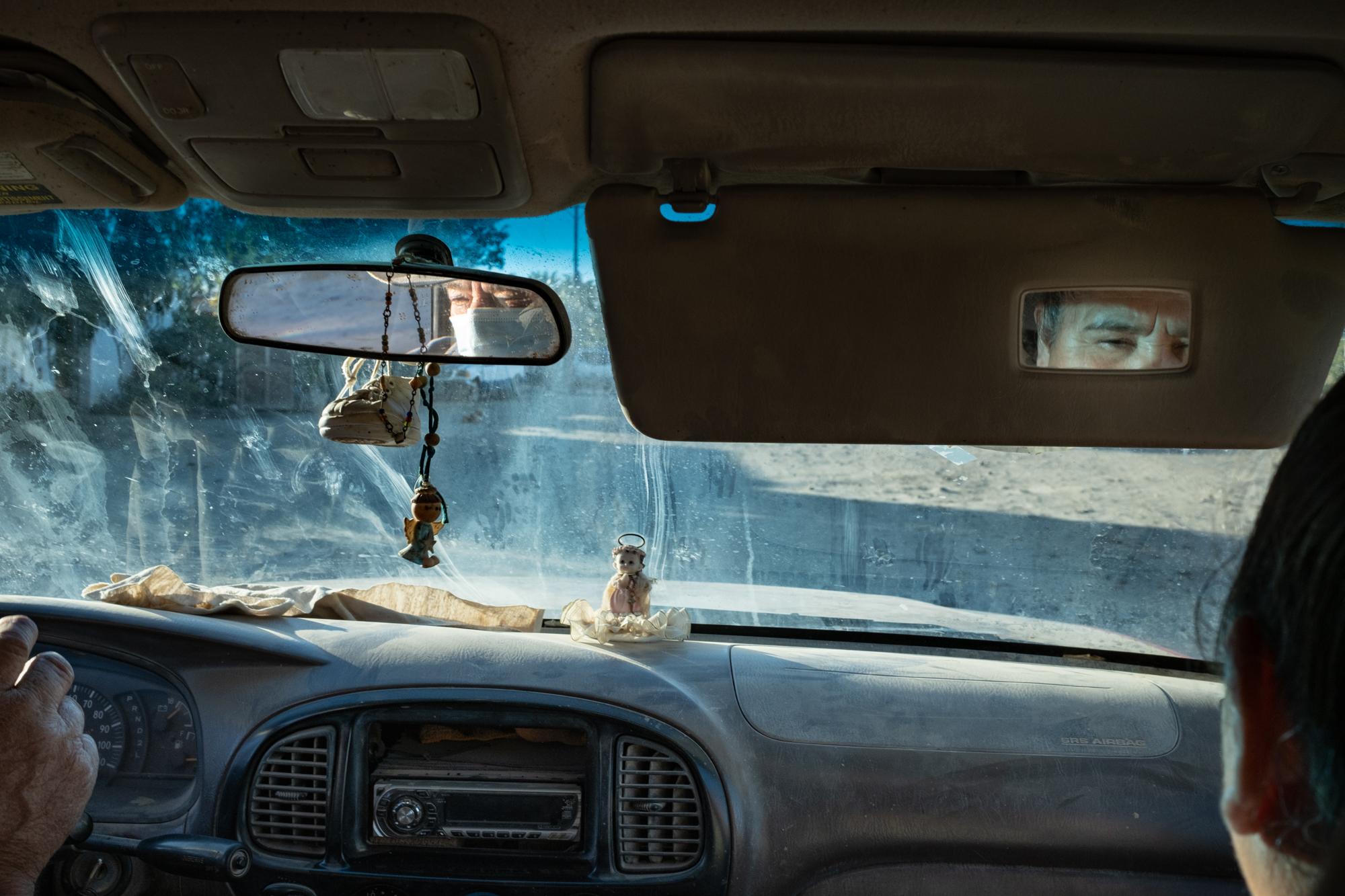
Felipe and Olga, are experiencing a big change in their life in their home of San Juanico, Baja California, Mexico, January 2021. What once was a quiet life full of rich fish is now a struggle to make a living. “There are no more fish,” Felipe says. With Felipe struggling to catch fish and make a sustainable living, Olga has been cooking and selling Tamales, a traditional food in Mexico. Mexico
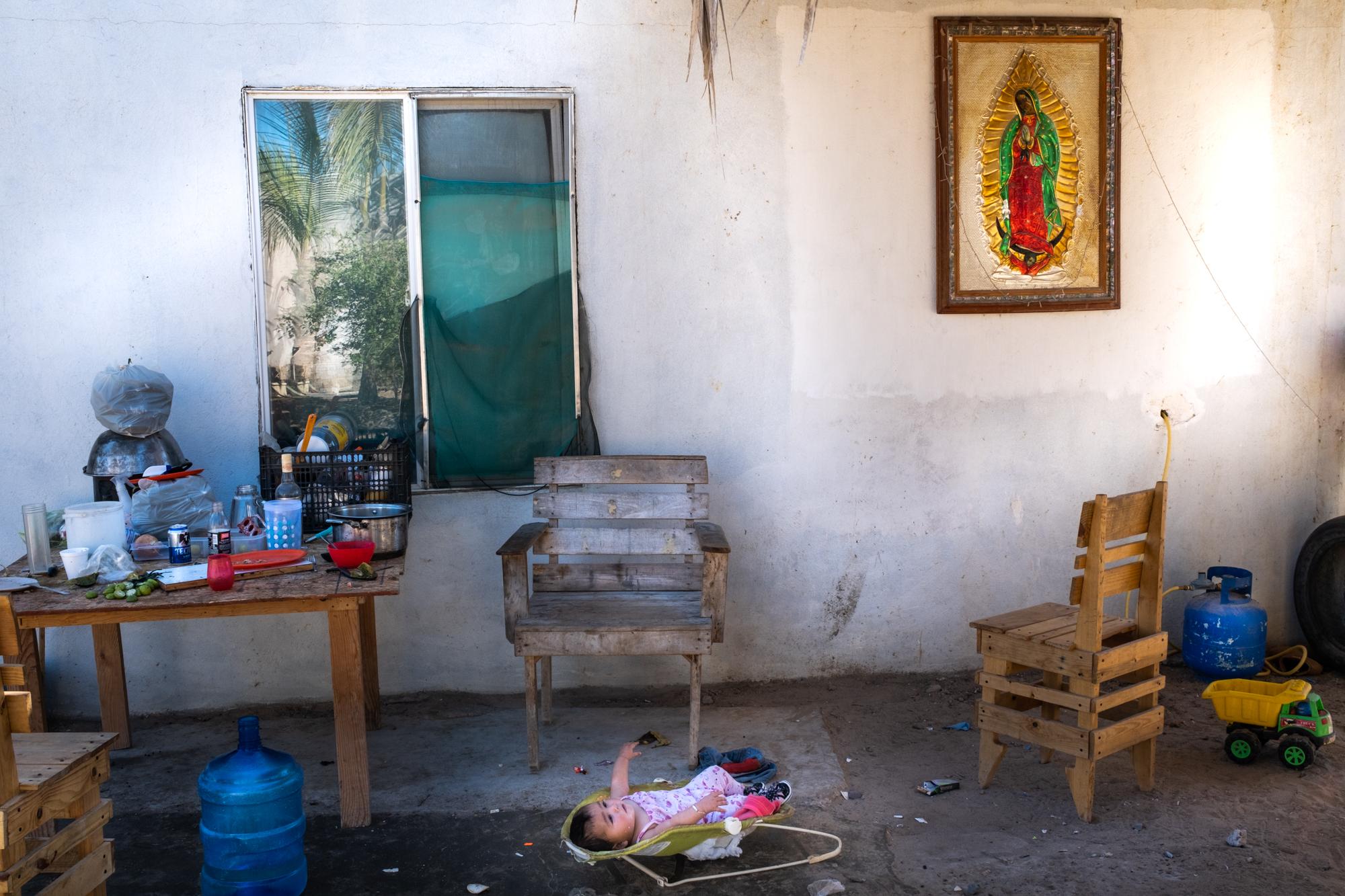
Emilda's granddaughter lays on a baby seat while the family prepares to go to the beach to receive the fish in San Juanico, Baja California, Mexico, January 2021. Emilda's daughters and grandchildren live with her. She comes from a long lineage of fishermen, but she hopes for something different for her grandchildren's future. She said that living off what the land provides us is not sustainable anymore.
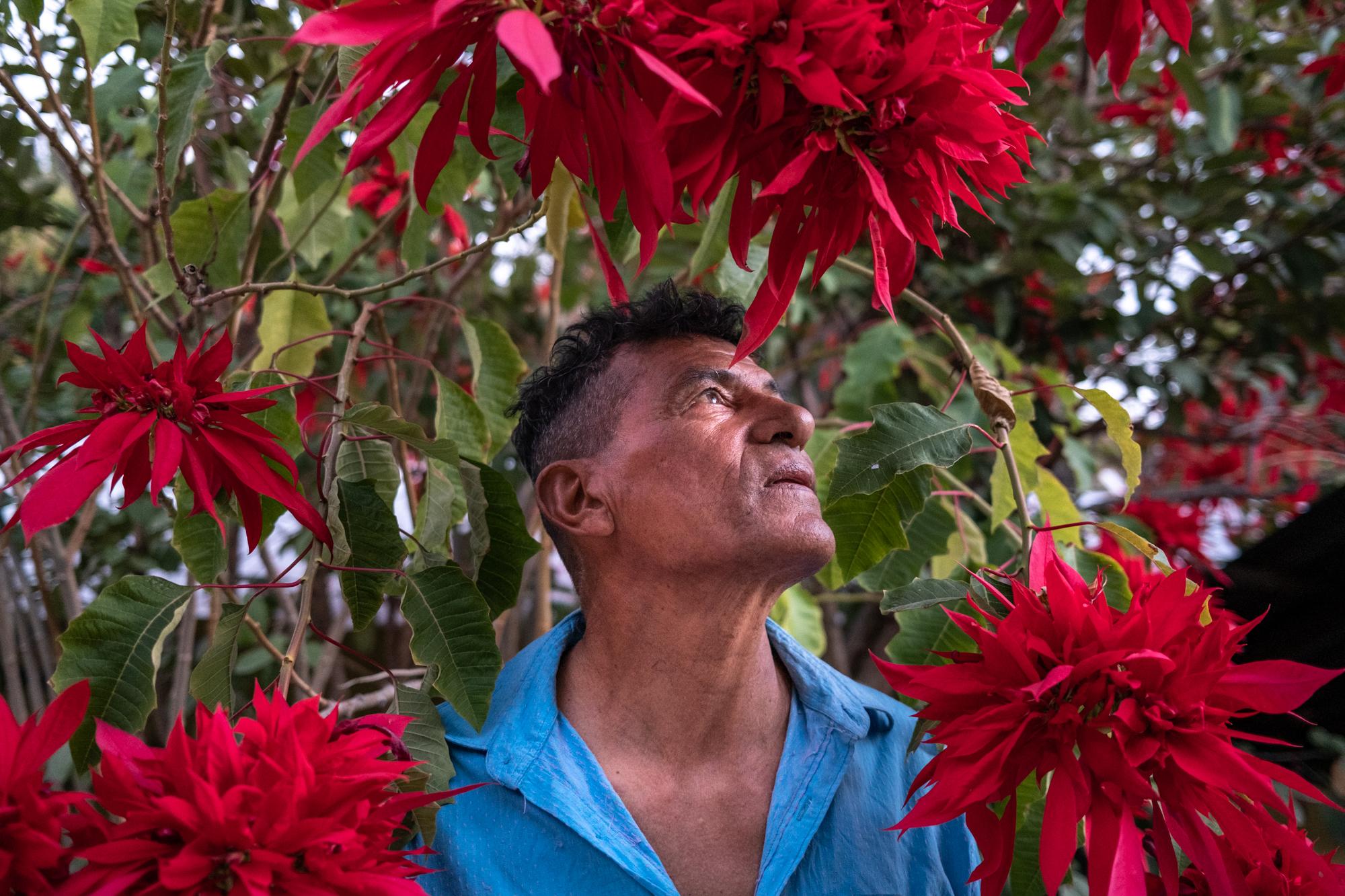
A portrait of Miguel Murillo, in the land where he was born and still lives, San Jose de Gracia, Baja California, Mexico, January, 2021. Miguel is leading the harvest of the mango crop, weaving old techniques with the hope that mango production will revive the community by attracting more people. Mexico
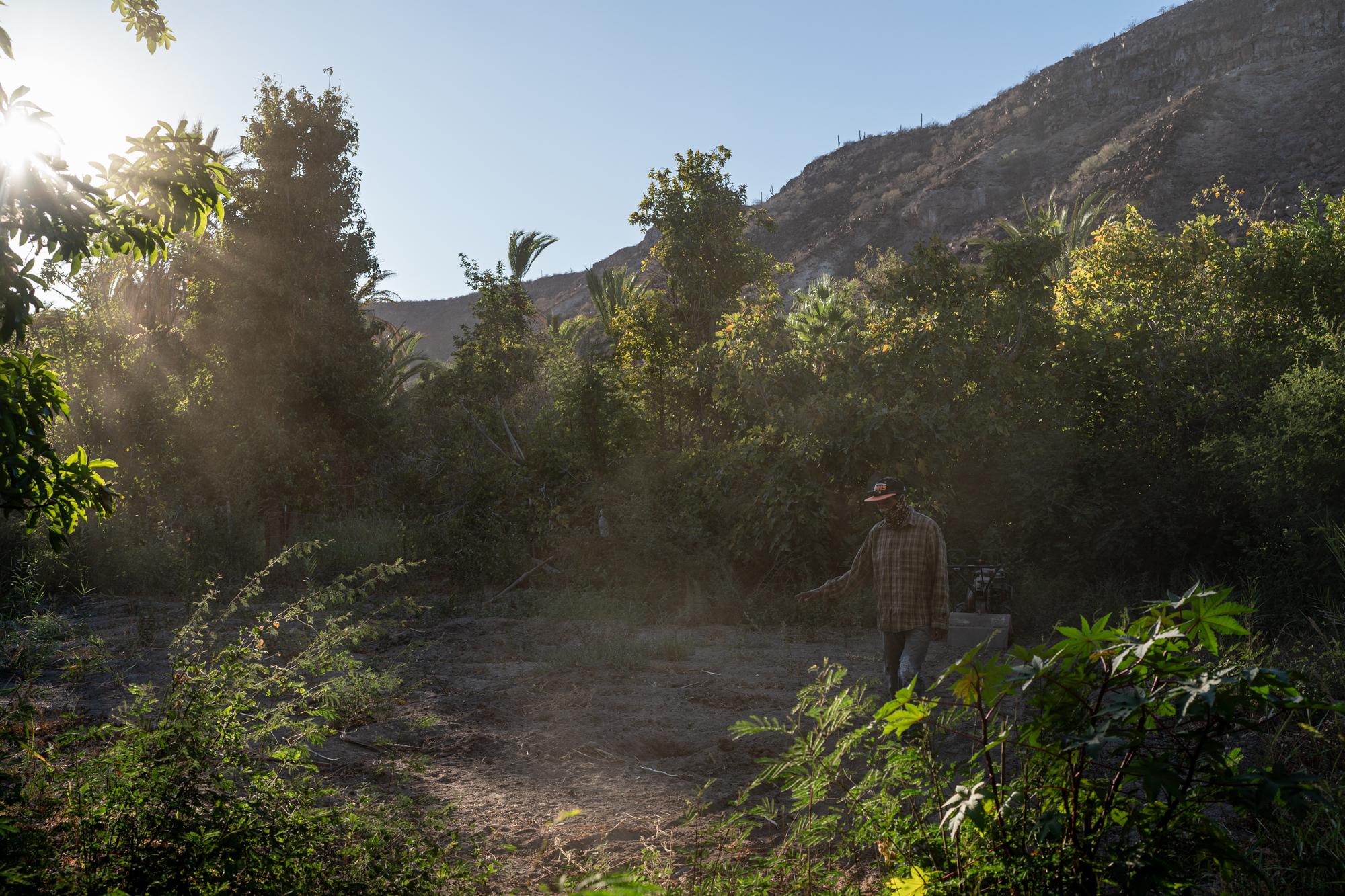
Rumaldo prepares the land to plant in San Jose de Gracia, Baja California, Mexico, November 2024. He is the only one left in the community who dedicates most of his time to cultivating and harvesting foods like they used to do in the past. He was born and raised in the community but hopes to move to his own ranch soon.
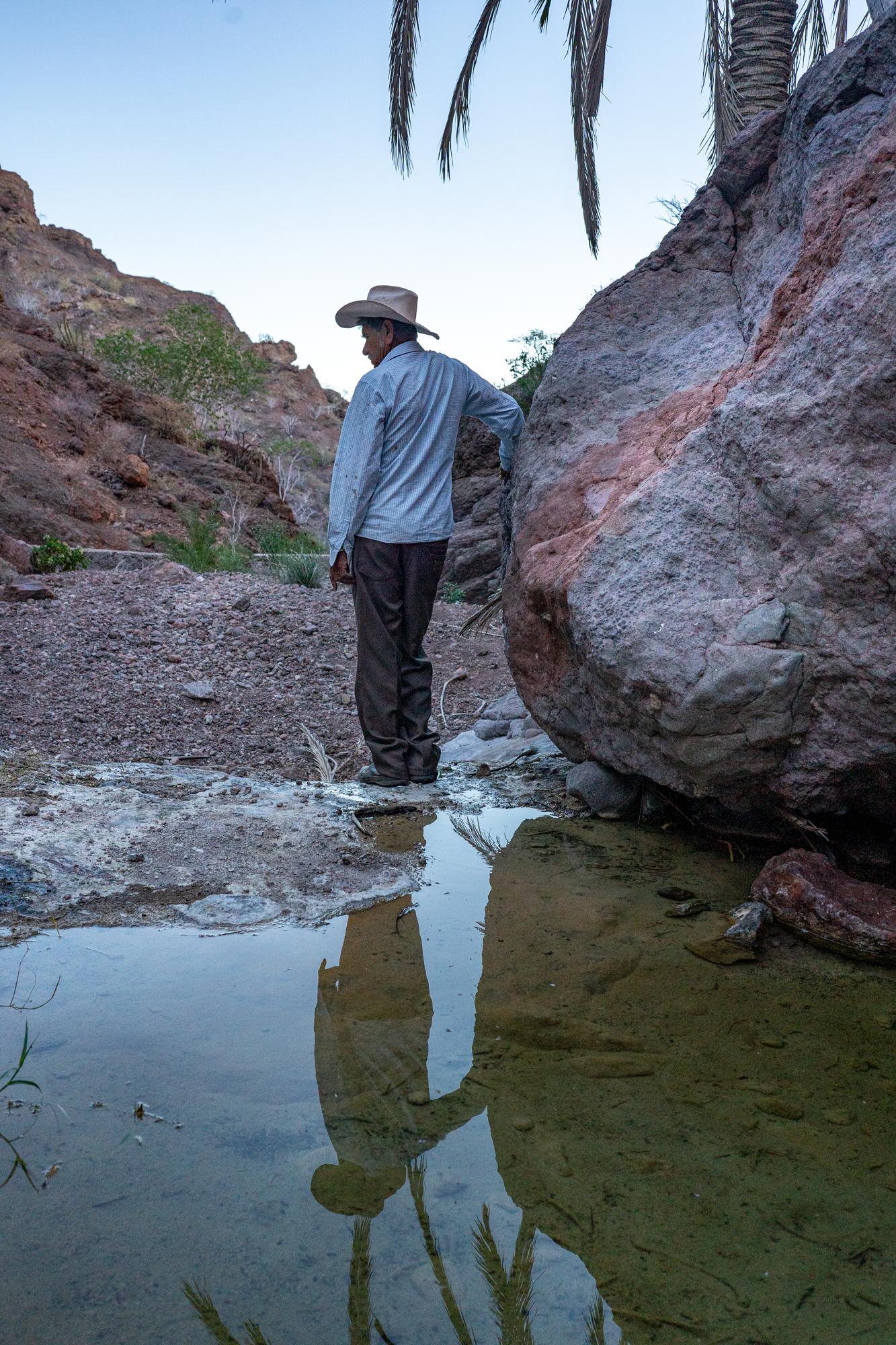
Alejo Romero stands next to a water hole close to his ranch, San Cosme, Baja California, Mexico, February 2022. At the age of eight Alejo used to ride a horse by himself to collect water from this water hole in buckets for his family. The water used to flow through the stone wall. Today the water comes and goes with the rain. He says if they don't get any rain before the summer, the water will all be gone. Mexico
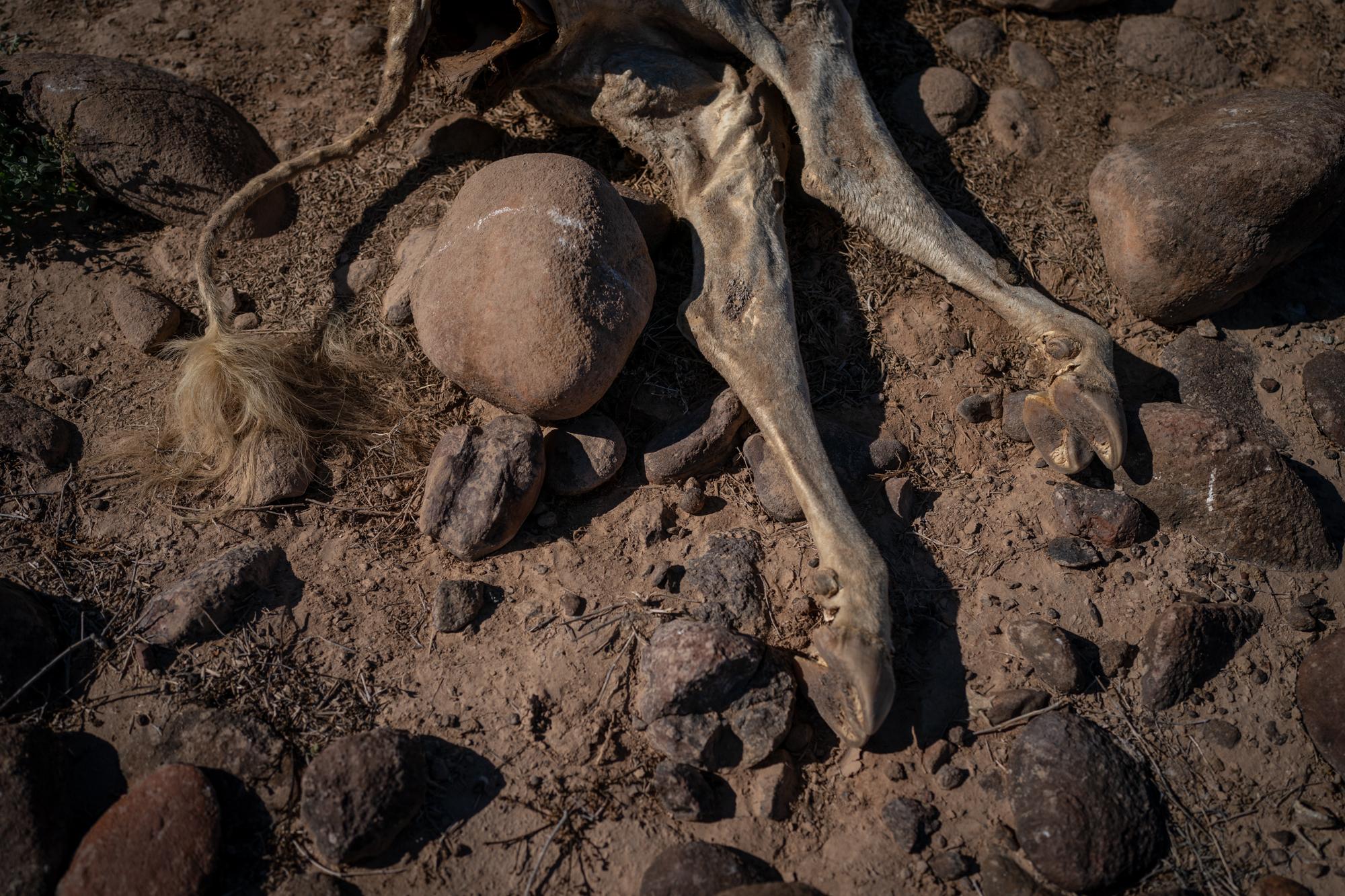
A dead cow it’s found a few kilometers away from Cadeje, where only a few residents are left living in the town, Baja California, Mexico, January 2022. Many of the ranchers have lost a majority of their animals as a consequence of the lack of rain. Some are abandoning their ranches and history just to survive. Mexico
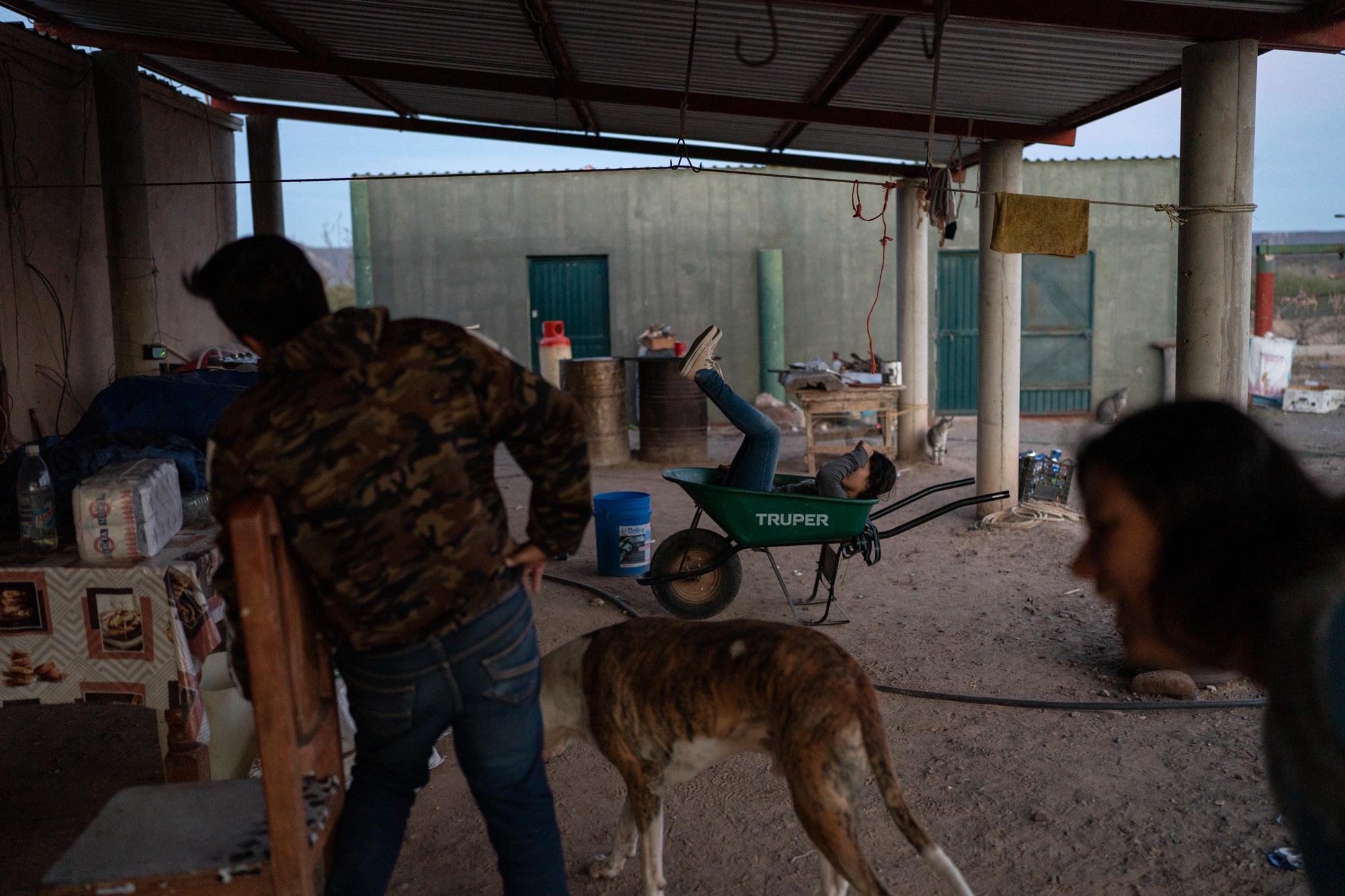
Gerardo, Dalma and Joli having a laugh at the ranch in San Juanico, Baja California, Mexico, February 2022. Joli grew up on a ranch a few kilometers away, and she still loves the quiet and the lifestyle of a rancher. Her daughter Dalma dreams of staying in the ranch and becoming a vet, but she is unsure of what the future holds for her. Mexico
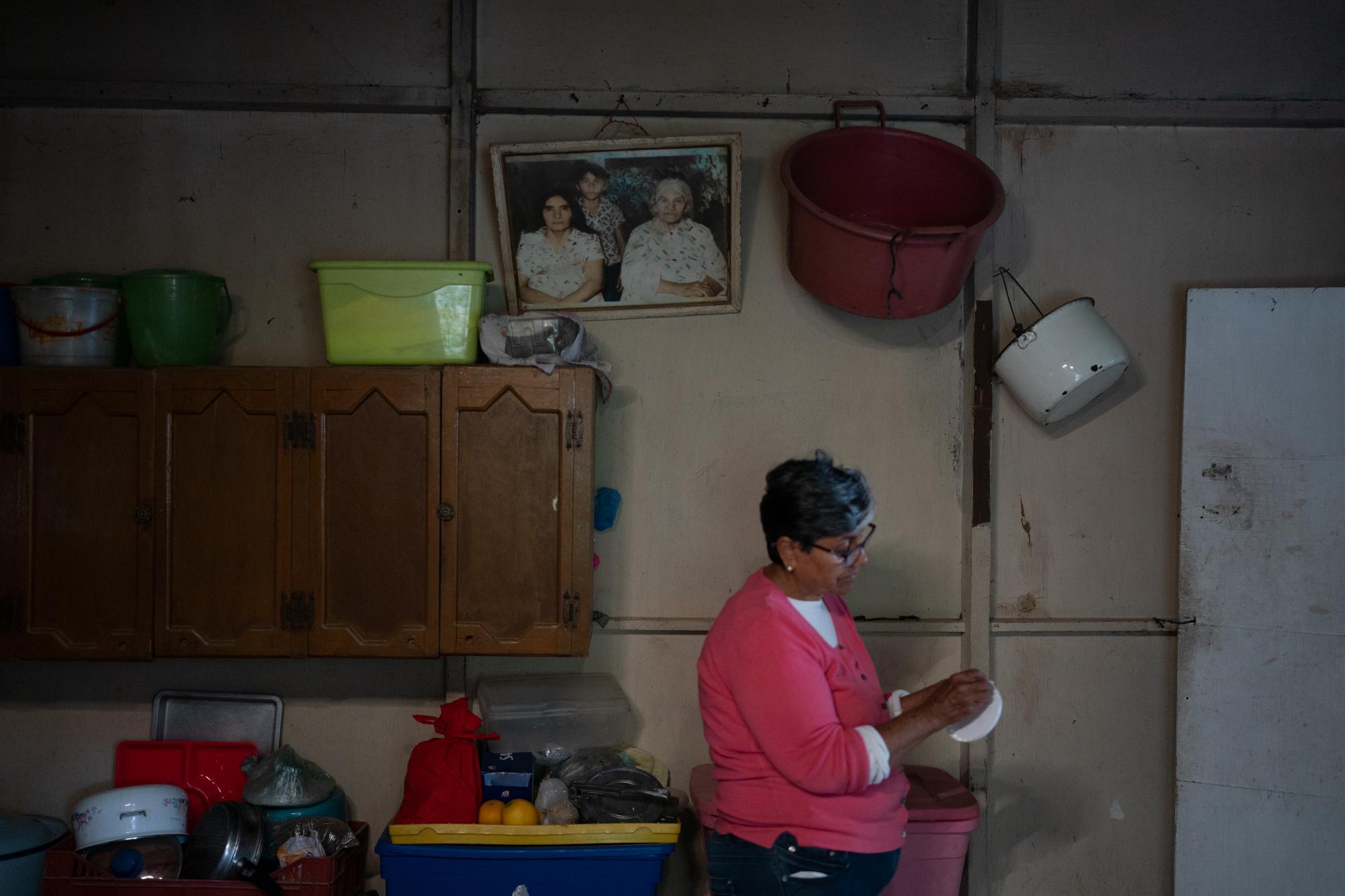
Norma Murillo cleans a container in the kitchen to store fresh guava jam prepared by his husband in San Jose de Gracia, Baja California, Mexico, July 2021. She was born and raised in the community, which has become a tradition. This one is made outside over the fire. They rely on this small sale for a living without other income opportunities. Norma's daughter migrated to the closest active community, almost two hours away from San Jose de Gracia, for better income opportunities.
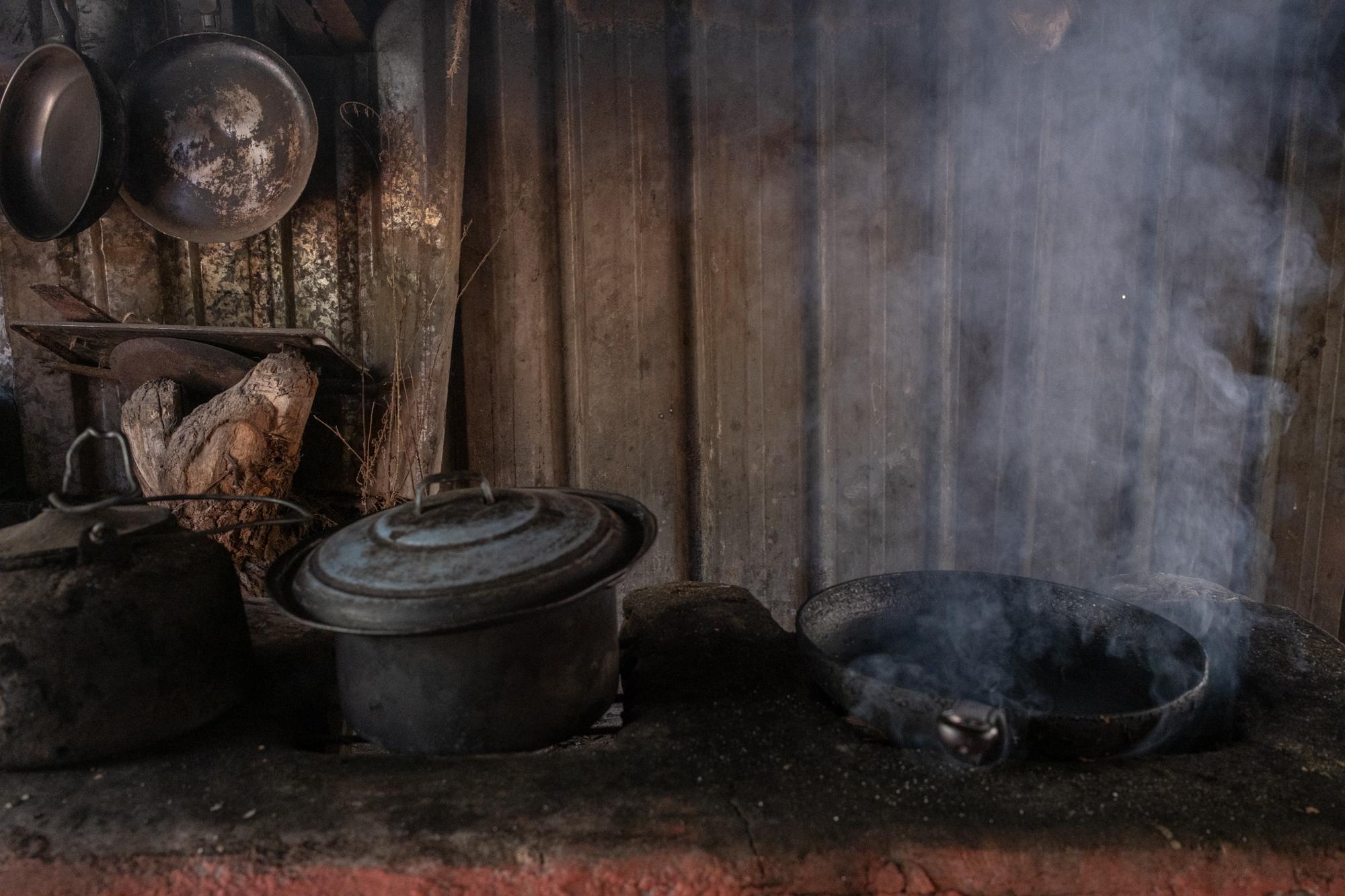
Andrea Murillo, Irma Murillo and Norma Murillo share a kitchen to prepare a meal in San Jose de Gracia, Baja California, Mexico, July 2021. The three of them were born and raised in the community, but only Norma still lives there. Norma's daughter migrated for better income opportunities to the closest active community almost two hours away from San Jose de Gracia.
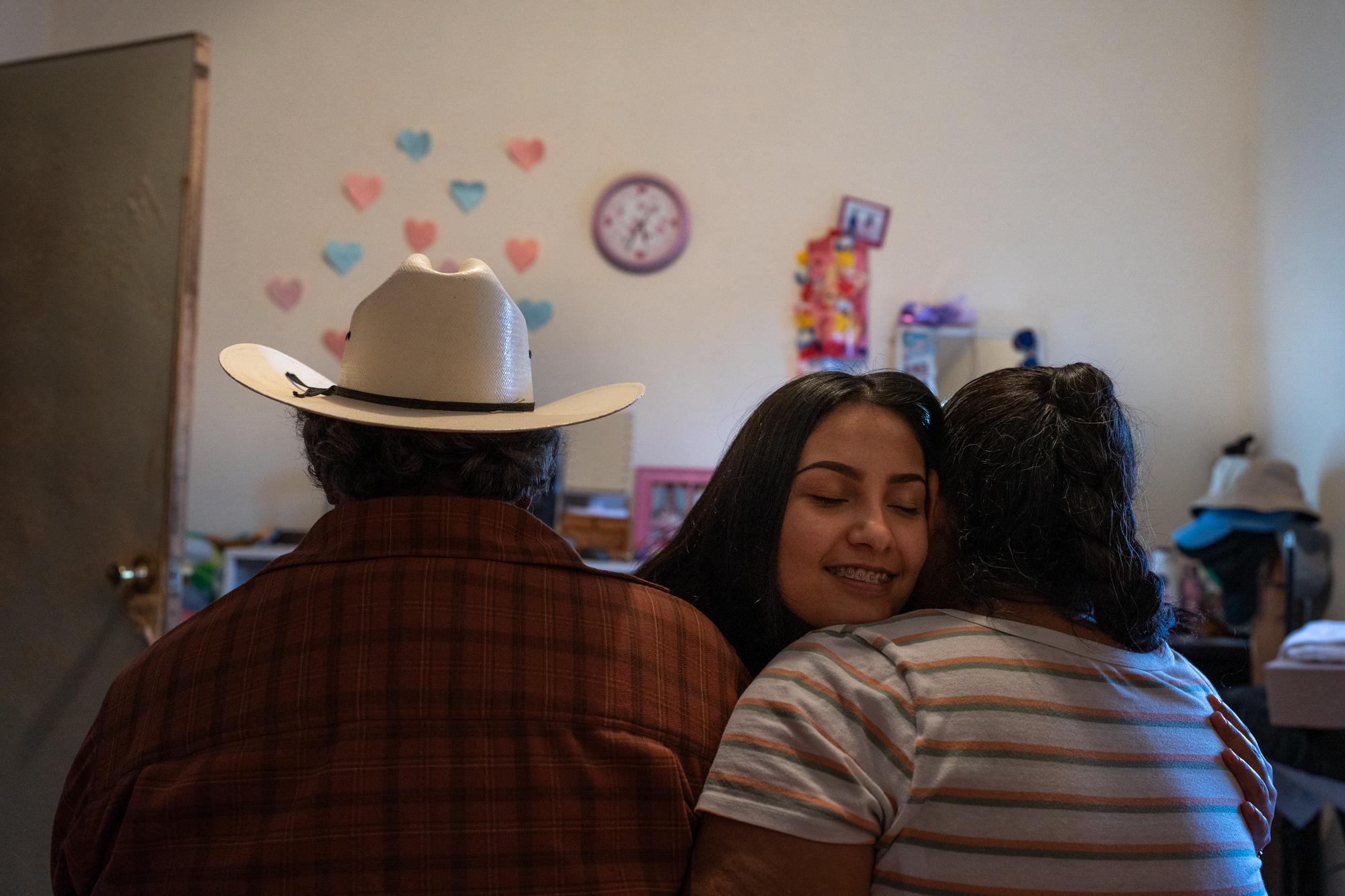
Paola hugs her mom before heading back to the city to study, San Juanico, Baja California, Mexico, February 2022. Since Covid she has been back in the town where she was born with her parents. Her dad is a fisherman, but he claims making a living as a fisherman is not viable anymore. “The fish are gone,” he says.
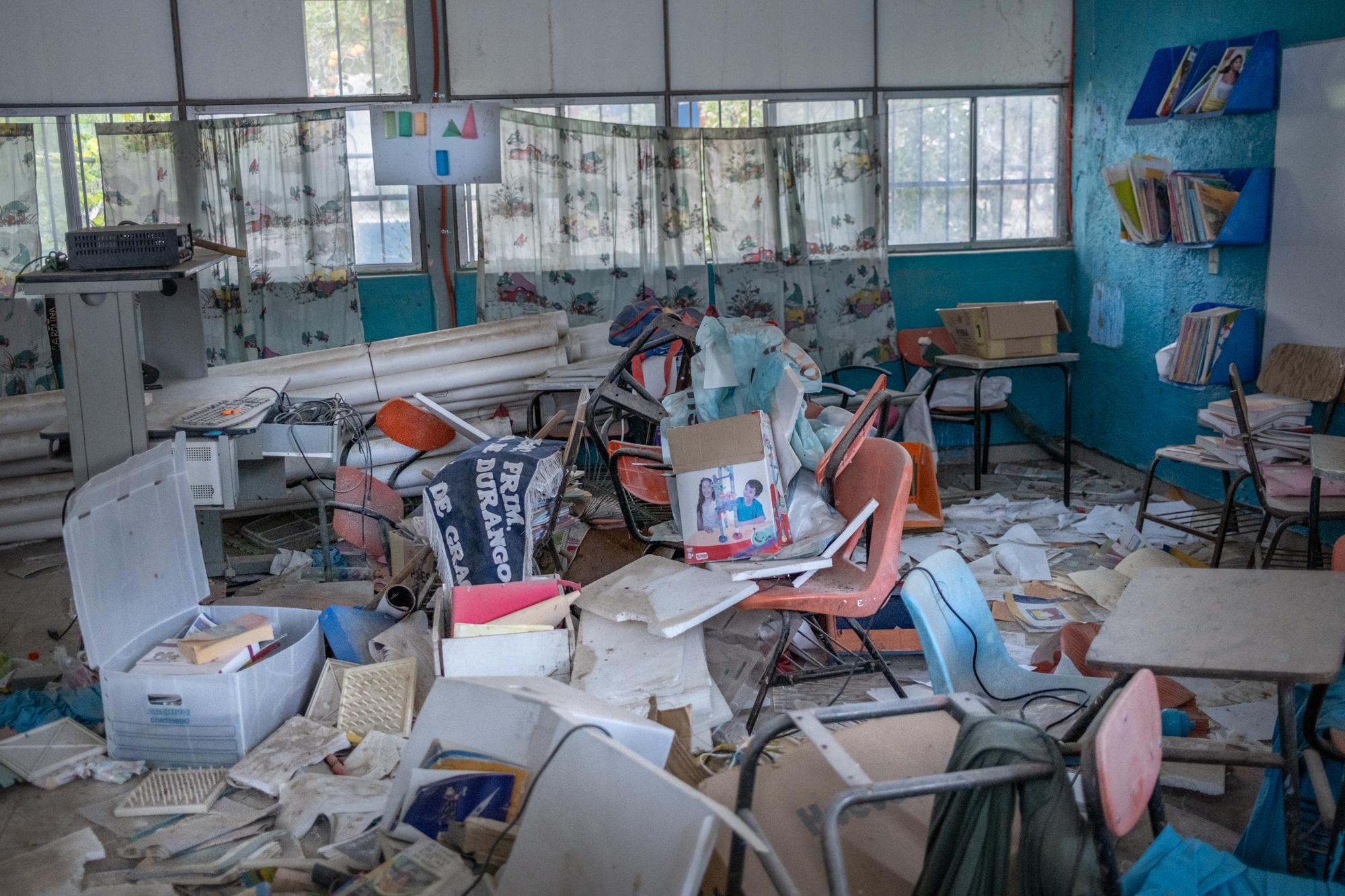
All the young families migrated away from the community leaving empty classrooms and abandoned houses, San Jose de Gracia, Baja California, Mexico, July 2021. The future of the younger generation is uncertain, pushing them to migrate to other cities, and even countries, finding new ways of life. Mexico
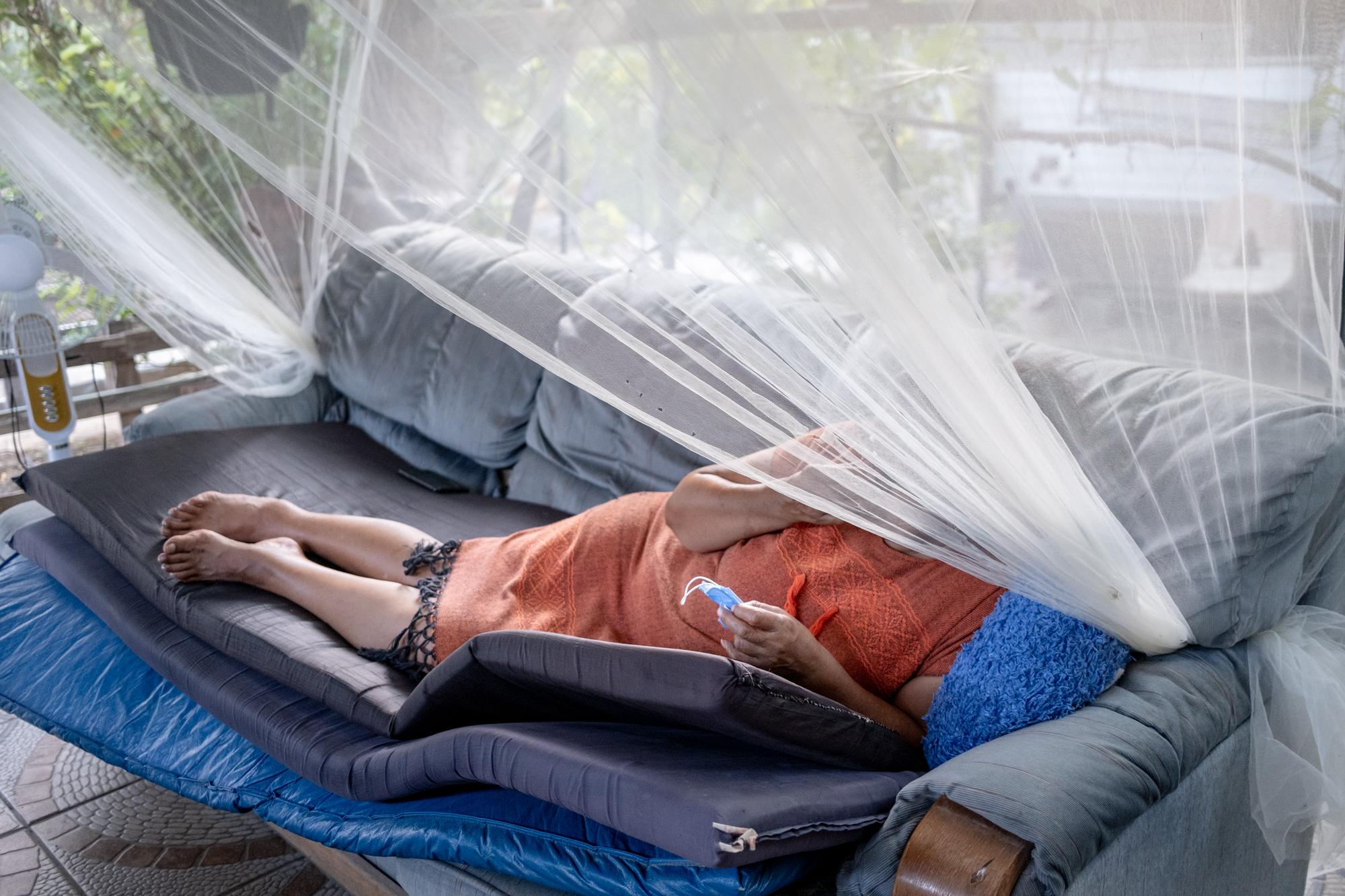
Crecencia was born, raised, and had her children in the community that once was her home, San Jose de Gracia, Baja California, Mexico, in July 2021. She moved away from the community to raise her children, but during the Covid-19 pandemic, she moved back to the community. Her knowledge of the area, especially the herbs and plants, is irreplaceable. She wonders what will happen to the place once she dies and there is no younger generation to pass the land along to. Mexico
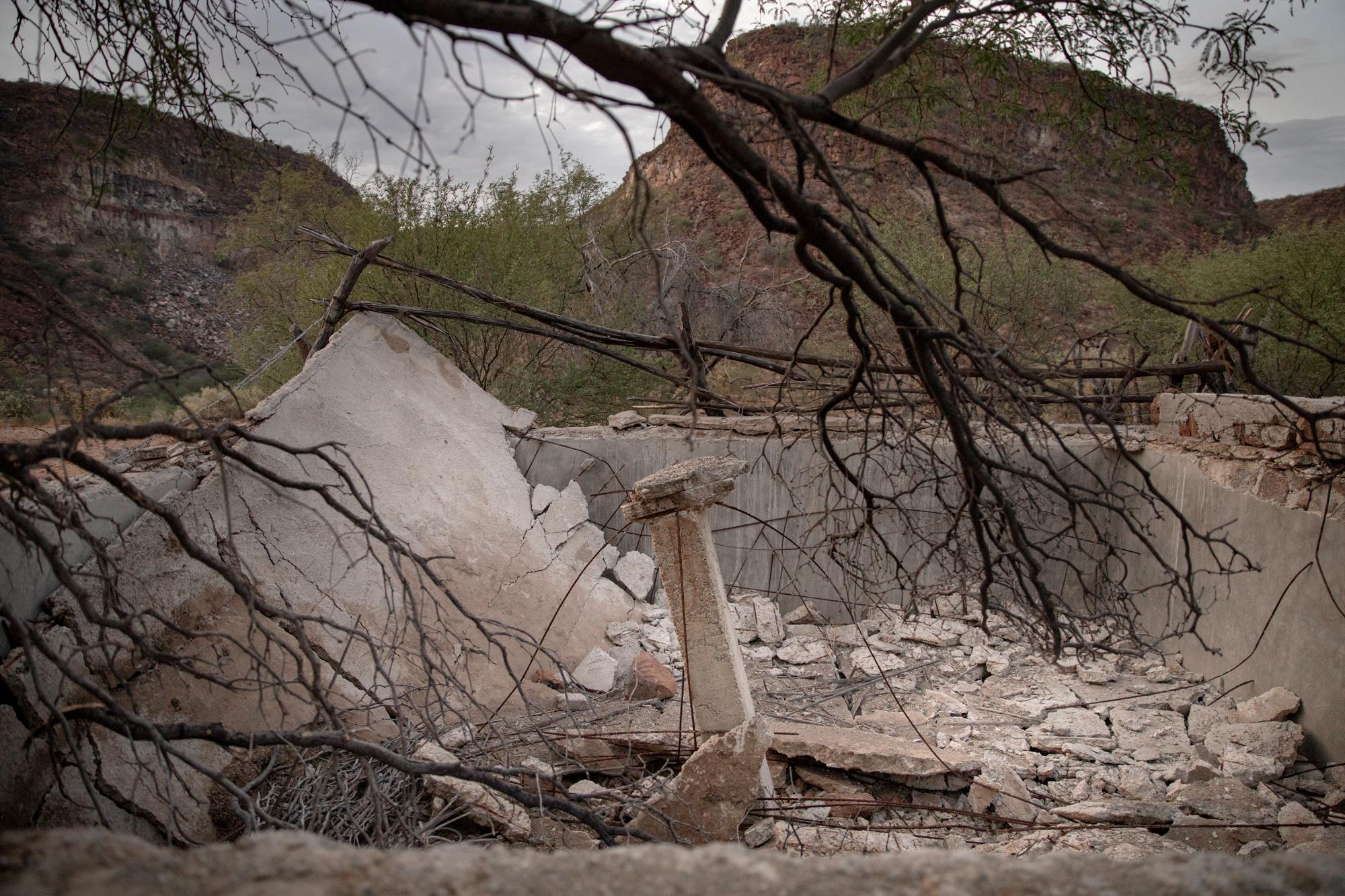
An abandoned house in San Jose de Gracia, Baja California, Mexico, July 2021. The population of San Jose de Gracia has been decreasing for the last few decades. An earlier census shows how, in the past 15 years, it has lost 51 community members, resulting in no younger generation to carry forward the traditions. Many houses have been abandoned, left to deteriorate into the landscape.
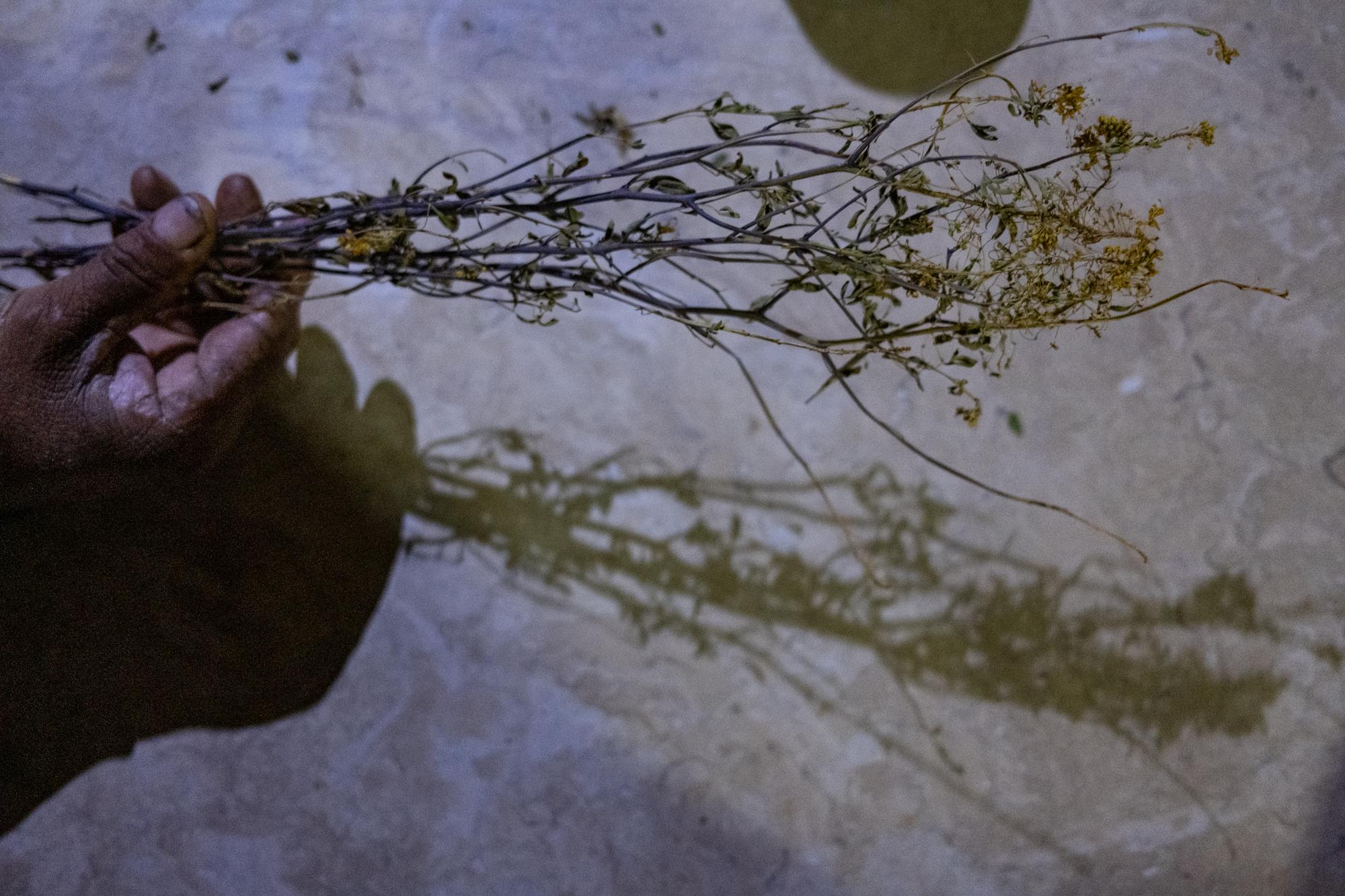
Chuy Rojas holds a piece of guaco in Rancho El Paraje, Baja California, Mexico, December, 2020. The native plant grows in the hills of the desert. They rely on this herb during the Covid-19 pandemic. Because of the drought, a lot of the herbs have been drying out, resulting in immense pressure for the ranchers that rely on these native plants to feed their animals, or to use as medicine and food.
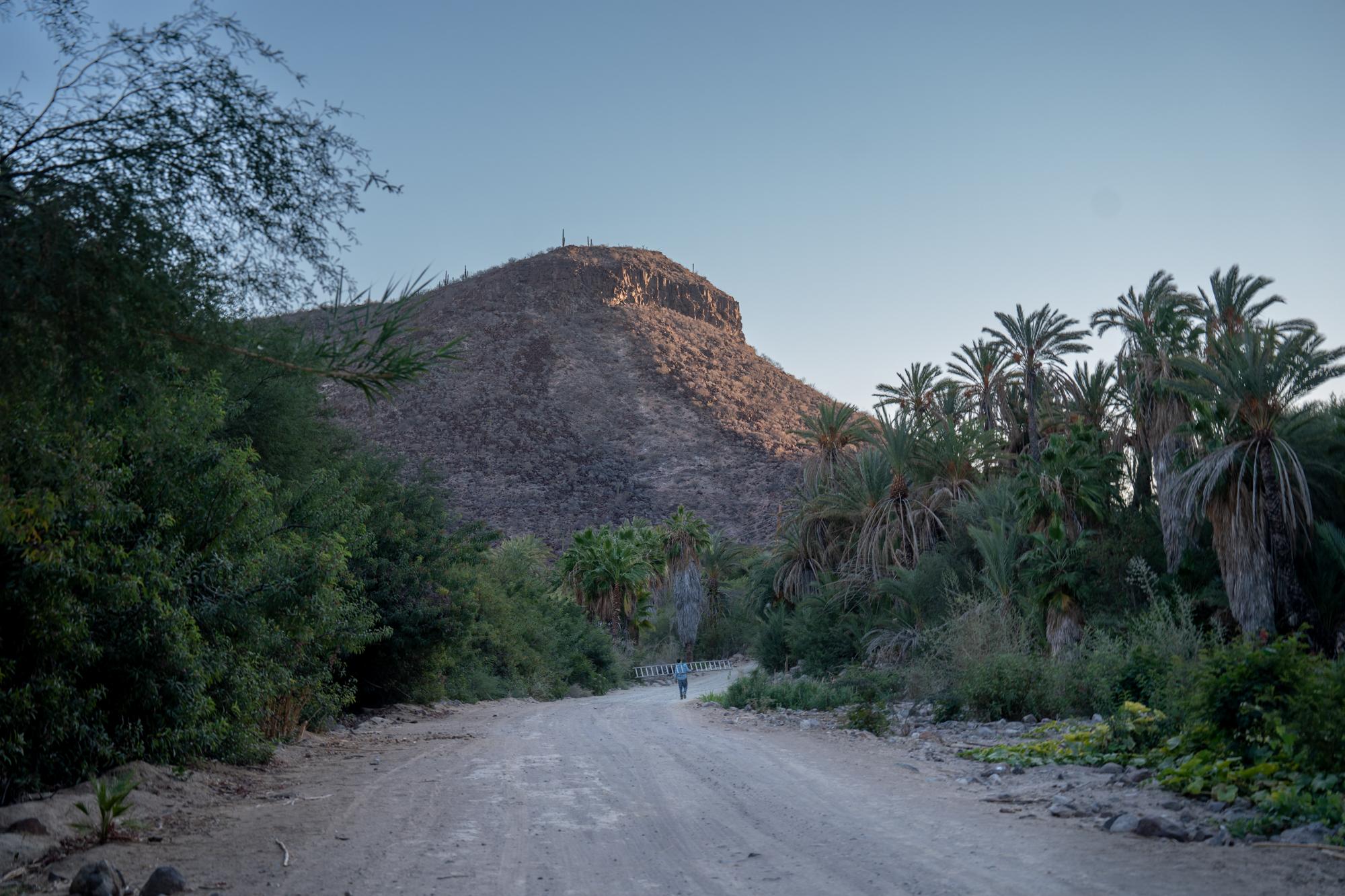
Rumaldo walks down a dirt road in the San Jose de Gracia Community, searching for palm trees with dates to chop down and feed the animals in Baja California, Mexico, in November 2024. It has been over two years since it has rained in the community, taking a toll on Rumaldo's way of living. He is now forced to dedicate full-time time to feeding the animals that no longer can rely on the wild for food.
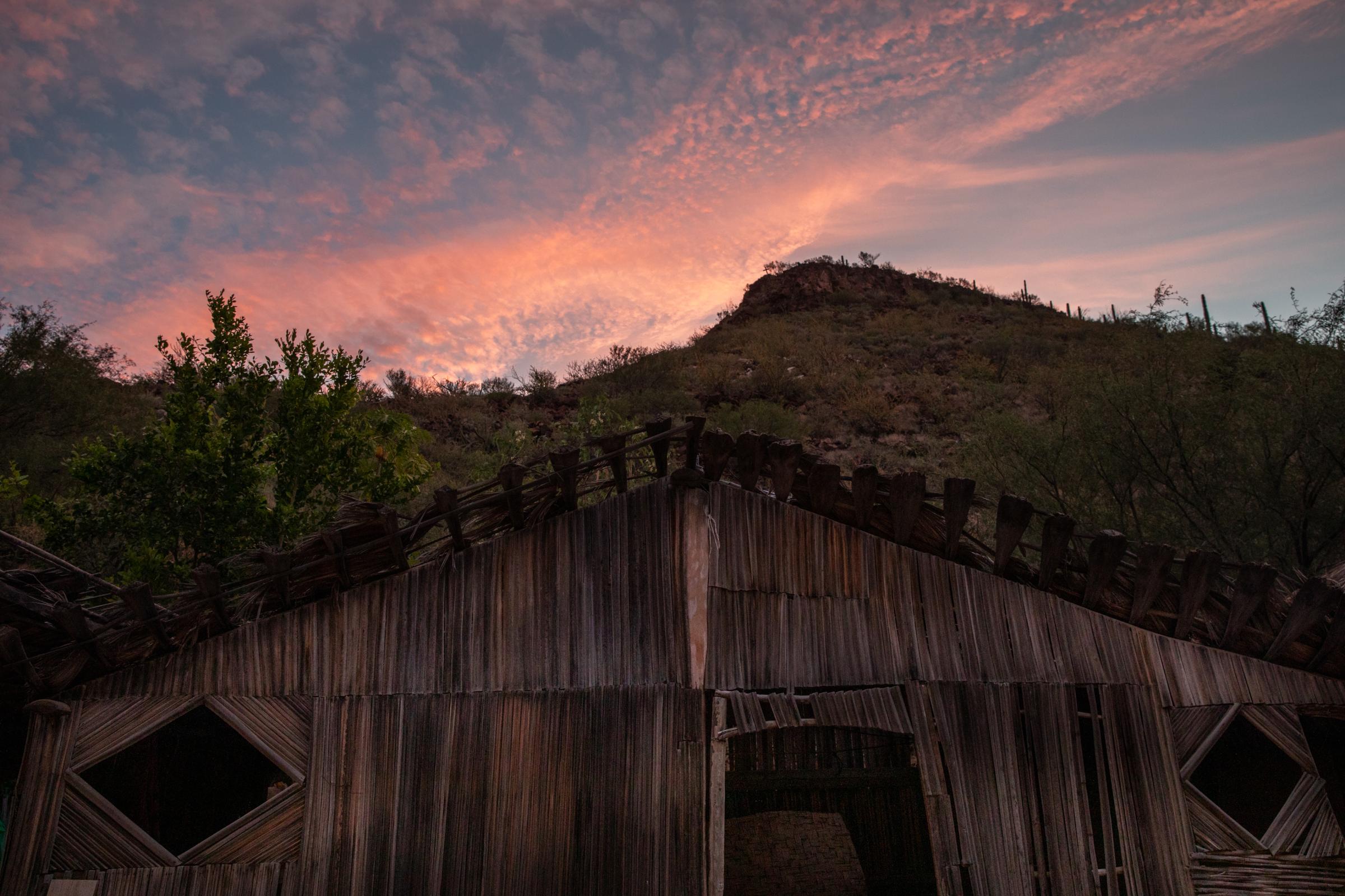
Morning light over an abandoned house in San Jose de Gracia, Baja California, Mexico, February 2022.
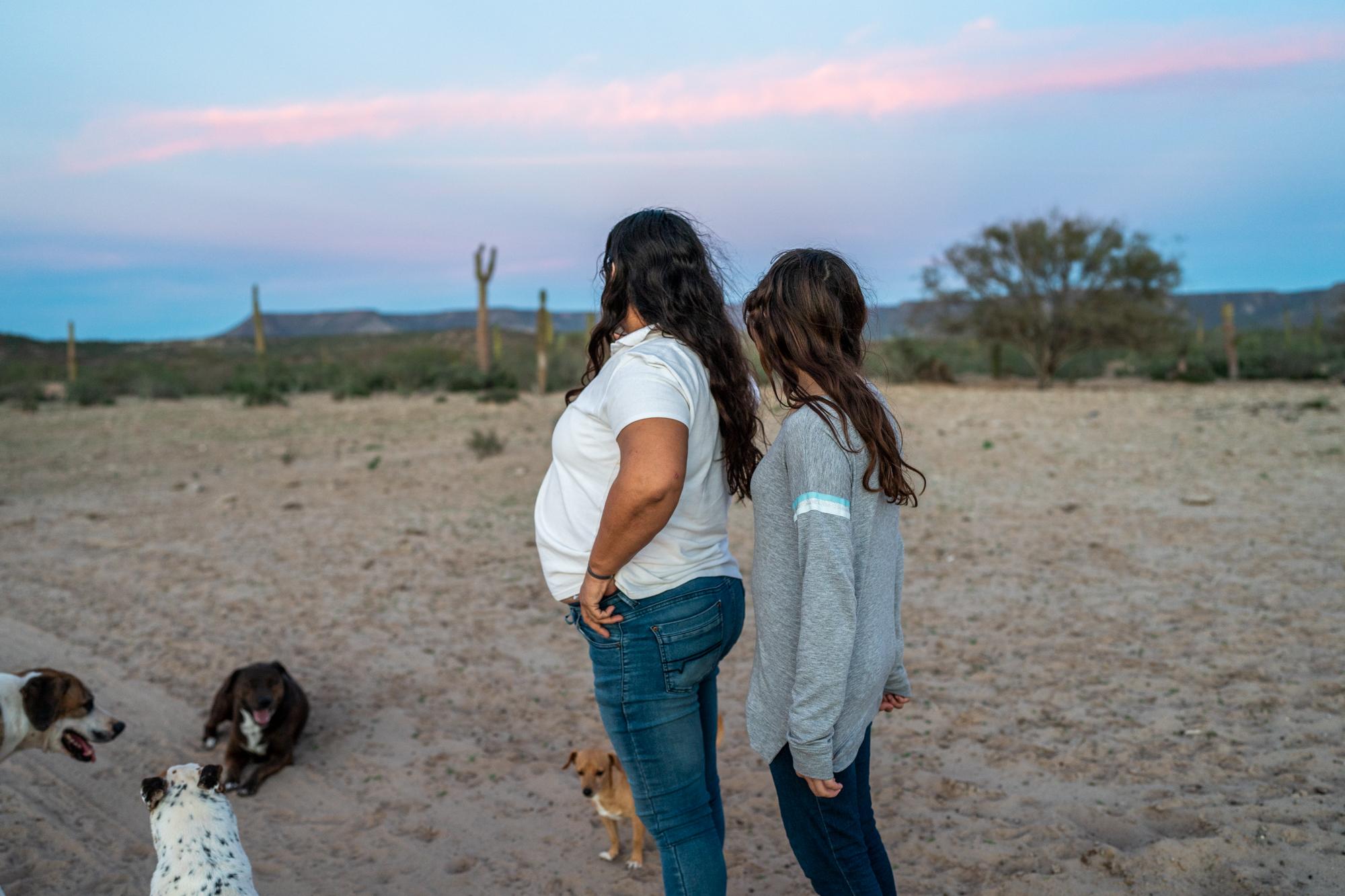
Joli stands next to her daughter at their ranch in San Juanico, Baja California, Mexico, January 2022. Joli hasn’t been able to produce cheese because the goats are not producing milk due to the lack of rain. Instead she has found other ways of making a living like making soap and sewing.
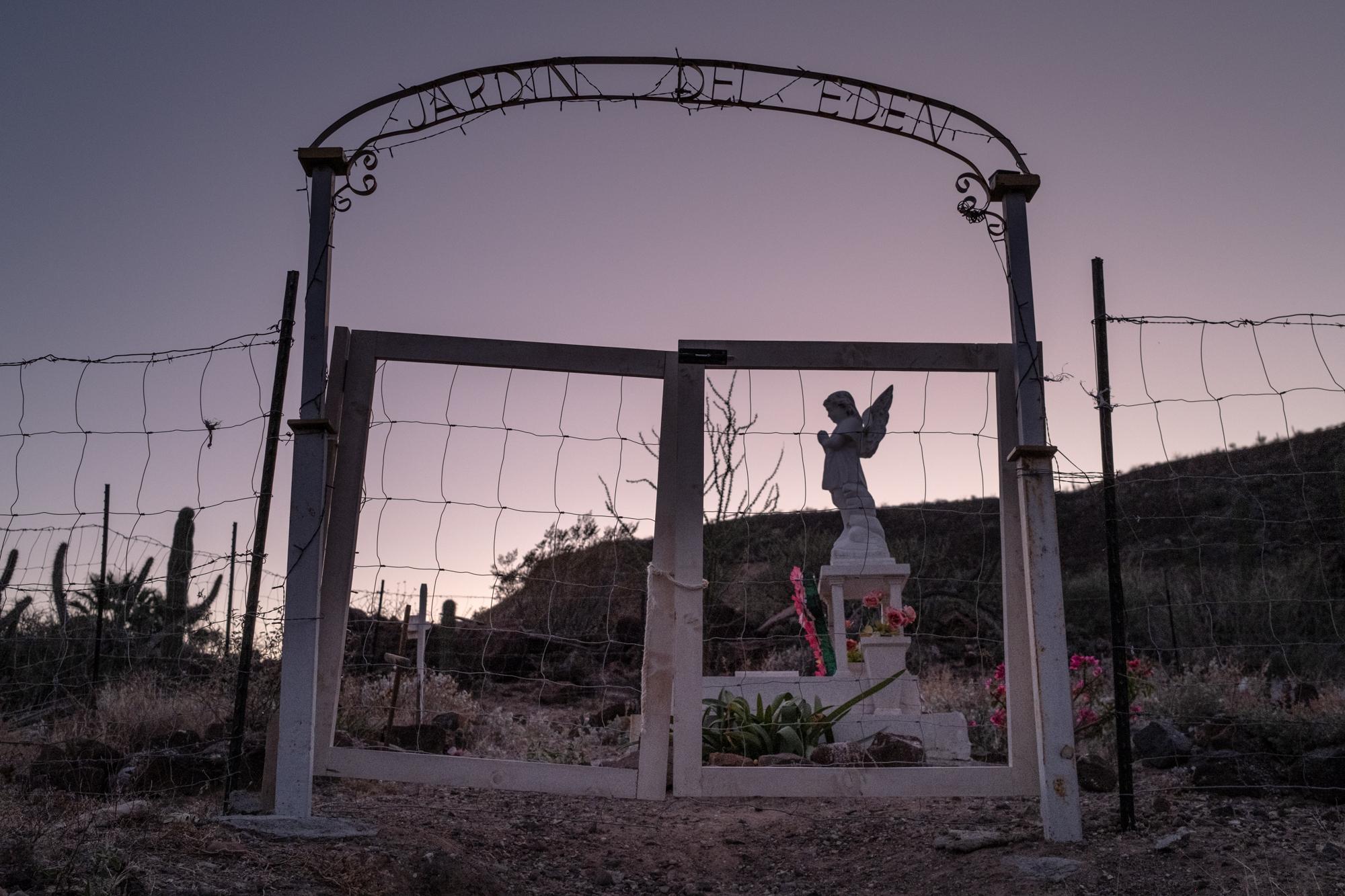
The kid's cemetery in San Jose de Gracia, Baja California, Mexico, January 2021. The small community has at least four different cemeteries generationally identified. For vulnerable communities like this, the risk to their members is the decreasing ability to sustain a living off the land as climate change continues to impress what seems like irreversible change in Baja California, Mexico. Mexico
Until We Are Gone
Across the Northern Baja Sur Region of Mexico, the traditional culture shaped by living directly off the land for hundreds of years is at risk of disappearing within our lifetime, and with it, their stories and ancestral knowledge.
Since 2020, Until We Are Gone has documented the journey of the people and the communities who have lived in these desert regions for hundreds of years with an intimate photo-reportage of their fears and hopes as they witness their traditions and memories fade away. The work reveals past and present stories of colonization, culture, and history and explores the current causes contributing to the rapidly shifting culture.
Across the Northern Baja Sur Region of Mexico, the traditional culture shaped by living directly off the land for hundreds of years is at risk of disappearing within our lifetime, and with it, their stories and ancestral knowledge.
Since 2020, Until We Are Gone has documented the journey of the people and the communities who have lived in these desert regions for hundreds of years with an intimate photo-reportage of their fears and hopes as they witness their traditions and memories fade away. The work reveals past and present stories of colonization, culture, and history and explores the current causes contributing to the rapidly shifting culture.

An aerial view of San Jose de Gracia - a community nestled in the middle of the Pacific coast of Baja California, Mexico, July, 2021. The community claims that it was founded 200 years ago, but today, there are only 21 members left living in the community. As with many other small communities, water is why they could settle and live in their surroundings. However, the rainy season has shifted, leaving their community without a waterfall flowing off the canyon as one used to. Mulegé Mexico

Alejo Romero rides a horse through his ranch, San Cosme, Baja California, Mexico, February 2022. At the age of eight Alejo used to ride a horse by himself to collect water with a bucket for his family. The water used to be more abundant. Today the water gets trucked from the closest city.

A reflection of Enrique's hand, San Jose de Gracia, Baja California, Mexico, February 2022. Enrique, 38, moved to the community two years ago with the hope to start a small clinic. His dad was born and raised in the community and is now teaching him about all the medicinal plants in the area. Mexico

Miguel Murillo cuts palms in San Jose de Gracia, Baja California, Mexico, to build houses outside the community, July 2021. A handful of homes in the community are still built 100% of palms. Concrete has been used in newer construction to replace this natural element. Only a couple of people left in the community are still cutting palms.

Dalma and Gerardo lay over the water tank, San Juanico, Baja California, Mexico, February 2022. The water is used to feed the plants and the animals. The ranch has a well of 60 meters that feeds the closest town approximately eight kilometers away. Because of the lack of water, all new water contracts are on pause in the town until a new well is dug. Mexico

An archival photo lies on a 100-year-old table from Chancha's grandmothers at her house in San Jose de Gracia, Baja California, Mexico, January 17th, 2021. The town was founded almost 200 years ago. With only 12 people living in the community and no younger up-and-coming generation, the community is at risk of disappearing, along with their collective memory and tradition. Mexico

Juana keeps warm in her house in San Jose de Gracia, Baja California, Mexico, February 2022. Juana is the oldest of 11 brothers and sisters. She was born and raised in the community. “It was never this cold in the winter,” she said. The community has all been claiming the unusual temperatures that they have had. Mexico

Portrait of Chuy Rojas in his ranch El Paraje, San ignacio, Mexico December 2020. Chuy holds immense knowledge of the area, but this one risks disappearing with no one to pass it on to.

On a calm sea in the early morning, Felipe and Arturo collect lobster and octopus in San Juanico, Baja California, Mexico, January 13th, 2021. The season used to last for two or three months, this season it only lasted for a week. This particular day they pulled only one octopus that weighed 500gr, which equals $2 USD. The local fishing community is stressing about what the future will bring them - to put food on their table and enough money to keep going. The elders are pushing the younger generation to stay clear of the industry, pushing them to move to the cities for greater opportunities. Baja California` Mexico`

An empty net lays on the beach, San Juanico, Baja California, Mexico, February 2022. Mexico

Emilda and her family clean the fish prior to transport to La Paz, Baja California, Mexico, January 2021. Emilda comes from a long fishing line, but she hopes differently for her kids. “It’s not like it used to be, there are no more fish.” She said.

On New Year’s Eve, Ramon Alvarez sits with his one year old daughter at his father in law’s ranch, Rancho El Paraje, Baja California, Mexico, December 2020. He also lives on a ranch, at his father’s place where he sells and buys animals for a living.

The San Jose de Gracia community placed ornaments in a rock crack in San Jose de Gracia, Baja California, Mexico, in November 2024. The town was founded almost 200 years ago. With less than 20 people living in the community and no younger up-and-coming generation, the community is at risk of disappearing, along with their collective memory and tradition. This photo is part of a larger project about the loss of cultural heritage in Baja California, Mexico.

Mario classifies dates in San Jose de Gracia, Baja California, Mexico, in November 2024. He is one of 20 who still live in the community. He still relies on small incomes like this to make money for a living.

Felipe and Olga, are experiencing a big change in their life in their home of San Juanico, Baja California, Mexico, January 2021. What once was a quiet life full of rich fish is now a struggle to make a living. “There are no more fish,” Felipe says. With Felipe struggling to catch fish and make a sustainable living, Olga has been cooking and selling Tamales, a traditional food in Mexico. Mexico

Emilda's granddaughter lays on a baby seat while the family prepares to go to the beach to receive the fish in San Juanico, Baja California, Mexico, January 2021. Emilda's daughters and grandchildren live with her. She comes from a long lineage of fishermen, but she hopes for something different for her grandchildren's future. She said that living off what the land provides us is not sustainable anymore.

A portrait of Miguel Murillo, in the land where he was born and still lives, San Jose de Gracia, Baja California, Mexico, January, 2021. Miguel is leading the harvest of the mango crop, weaving old techniques with the hope that mango production will revive the community by attracting more people. Mexico

Rumaldo prepares the land to plant in San Jose de Gracia, Baja California, Mexico, November 2024. He is the only one left in the community who dedicates most of his time to cultivating and harvesting foods like they used to do in the past. He was born and raised in the community but hopes to move to his own ranch soon.

Alejo Romero stands next to a water hole close to his ranch, San Cosme, Baja California, Mexico, February 2022. At the age of eight Alejo used to ride a horse by himself to collect water from this water hole in buckets for his family. The water used to flow through the stone wall. Today the water comes and goes with the rain. He says if they don't get any rain before the summer, the water will all be gone. Mexico

A dead cow it’s found a few kilometers away from Cadeje, where only a few residents are left living in the town, Baja California, Mexico, January 2022. Many of the ranchers have lost a majority of their animals as a consequence of the lack of rain. Some are abandoning their ranches and history just to survive. Mexico

Gerardo, Dalma and Joli having a laugh at the ranch in San Juanico, Baja California, Mexico, February 2022. Joli grew up on a ranch a few kilometers away, and she still loves the quiet and the lifestyle of a rancher. Her daughter Dalma dreams of staying in the ranch and becoming a vet, but she is unsure of what the future holds for her. Mexico

Norma Murillo cleans a container in the kitchen to store fresh guava jam prepared by his husband in San Jose de Gracia, Baja California, Mexico, July 2021. She was born and raised in the community, which has become a tradition. This one is made outside over the fire. They rely on this small sale for a living without other income opportunities. Norma's daughter migrated to the closest active community, almost two hours away from San Jose de Gracia, for better income opportunities.

Andrea Murillo, Irma Murillo and Norma Murillo share a kitchen to prepare a meal in San Jose de Gracia, Baja California, Mexico, July 2021. The three of them were born and raised in the community, but only Norma still lives there. Norma's daughter migrated for better income opportunities to the closest active community almost two hours away from San Jose de Gracia.

Paola hugs her mom before heading back to the city to study, San Juanico, Baja California, Mexico, February 2022. Since Covid she has been back in the town where she was born with her parents. Her dad is a fisherman, but he claims making a living as a fisherman is not viable anymore. “The fish are gone,” he says.

All the young families migrated away from the community leaving empty classrooms and abandoned houses, San Jose de Gracia, Baja California, Mexico, July 2021. The future of the younger generation is uncertain, pushing them to migrate to other cities, and even countries, finding new ways of life. Mexico

Crecencia was born, raised, and had her children in the community that once was her home, San Jose de Gracia, Baja California, Mexico, in July 2021. She moved away from the community to raise her children, but during the Covid-19 pandemic, she moved back to the community. Her knowledge of the area, especially the herbs and plants, is irreplaceable. She wonders what will happen to the place once she dies and there is no younger generation to pass the land along to. Mexico

An abandoned house in San Jose de Gracia, Baja California, Mexico, July 2021. The population of San Jose de Gracia has been decreasing for the last few decades. An earlier census shows how, in the past 15 years, it has lost 51 community members, resulting in no younger generation to carry forward the traditions. Many houses have been abandoned, left to deteriorate into the landscape.

Chuy Rojas holds a piece of guaco in Rancho El Paraje, Baja California, Mexico, December, 2020. The native plant grows in the hills of the desert. They rely on this herb during the Covid-19 pandemic. Because of the drought, a lot of the herbs have been drying out, resulting in immense pressure for the ranchers that rely on these native plants to feed their animals, or to use as medicine and food.

Rumaldo walks down a dirt road in the San Jose de Gracia Community, searching for palm trees with dates to chop down and feed the animals in Baja California, Mexico, in November 2024. It has been over two years since it has rained in the community, taking a toll on Rumaldo's way of living. He is now forced to dedicate full-time time to feeding the animals that no longer can rely on the wild for food.

Morning light over an abandoned house in San Jose de Gracia, Baja California, Mexico, February 2022.

Joli stands next to her daughter at their ranch in San Juanico, Baja California, Mexico, January 2022. Joli hasn’t been able to produce cheese because the goats are not producing milk due to the lack of rain. Instead she has found other ways of making a living like making soap and sewing.

The kid's cemetery in San Jose de Gracia, Baja California, Mexico, January 2021. The small community has at least four different cemeteries generationally identified. For vulnerable communities like this, the risk to their members is the decreasing ability to sustain a living off the land as climate change continues to impress what seems like irreversible change in Baja California, Mexico. Mexico